ANFS 240 Lab Practical Final: All Required Structures (with pictures!)
1/106
Earn XP
Description and Tags
University of Delaware, Spring 2025, Dr. Gaab
Name | Mastery | Learn | Test | Matching | Spaced |
|---|
No study sessions yet.
107 Terms
Cranial
Toward the head
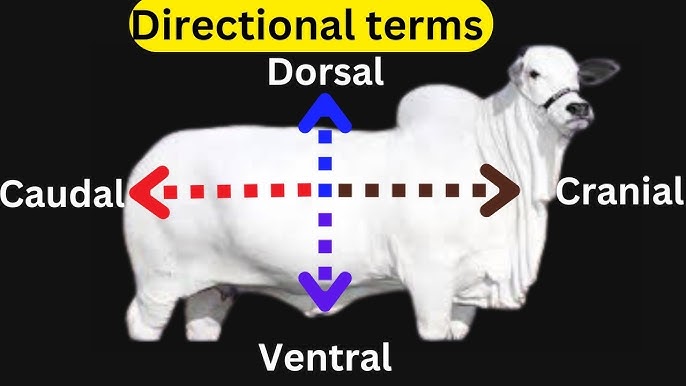
Caudal
Away from the head, toward the tail region
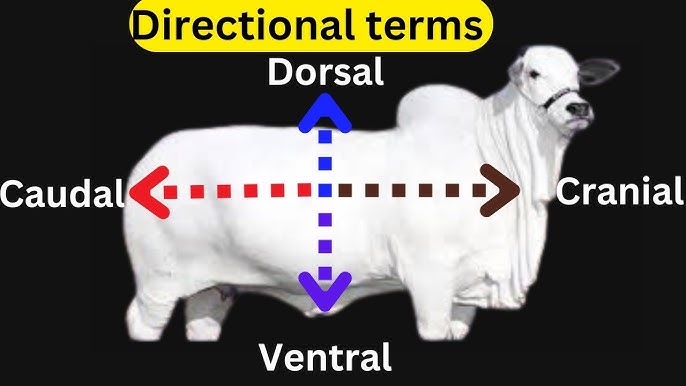
Lateral
Away from the midline
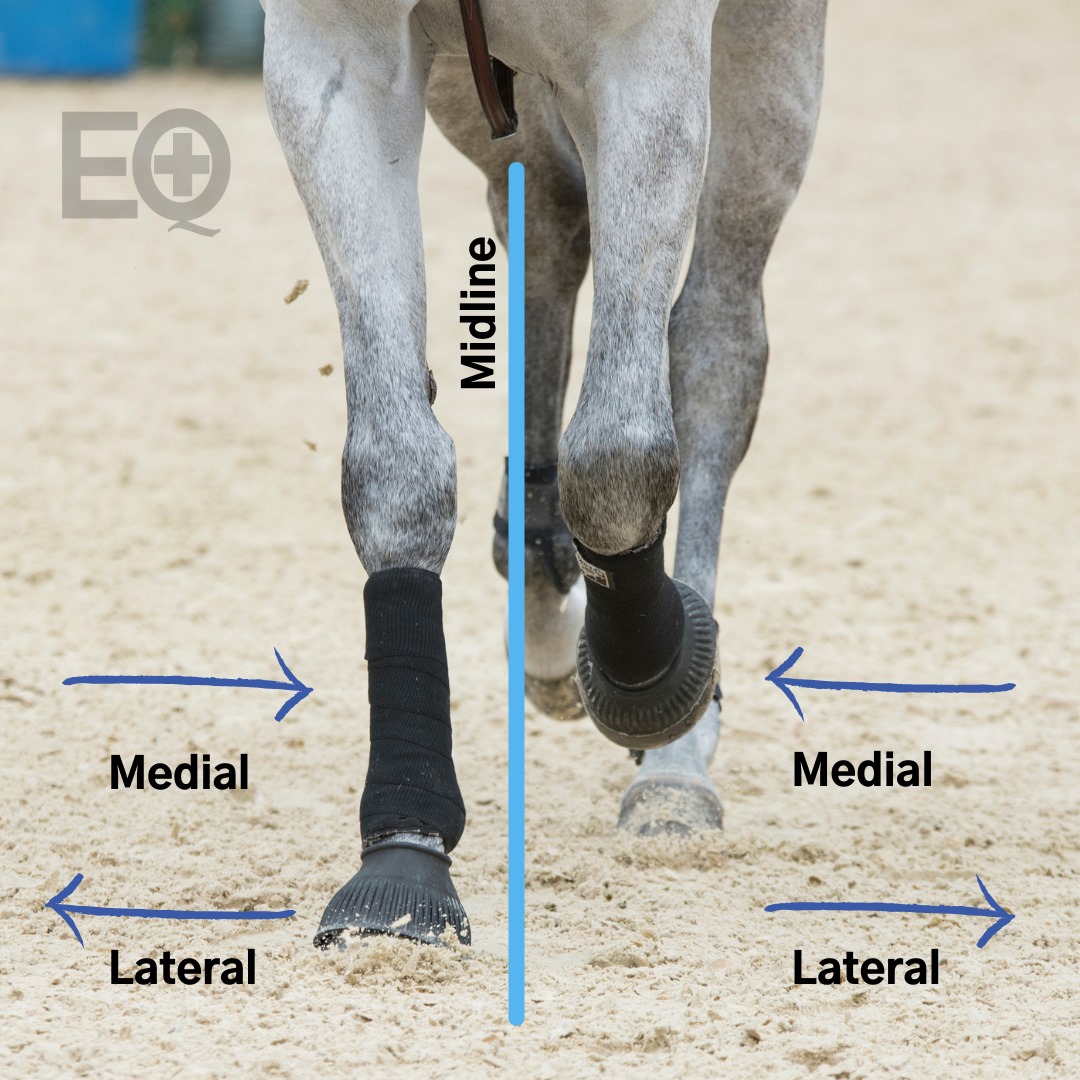
Medial
Toward the midline
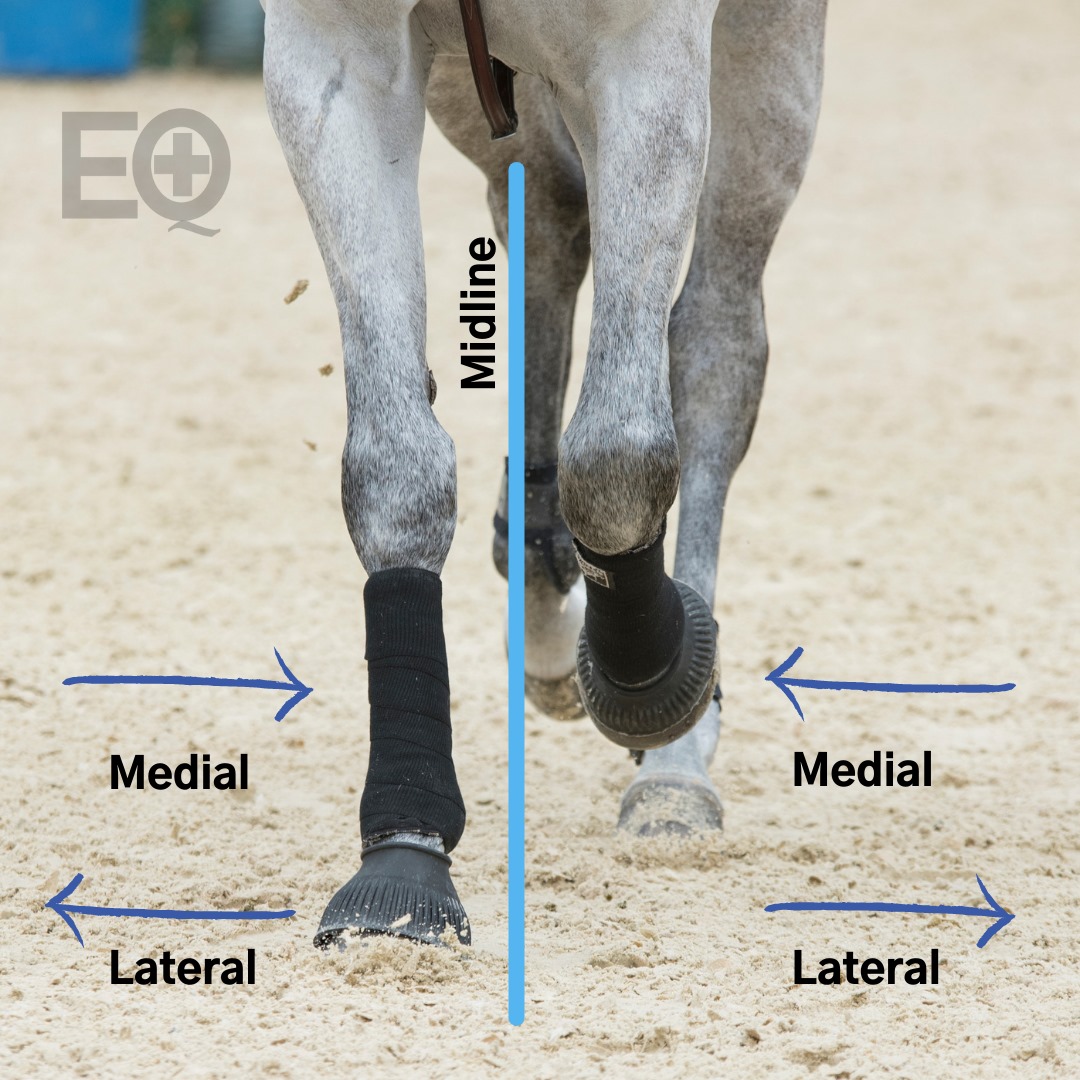
Dorsal
Toward the spine
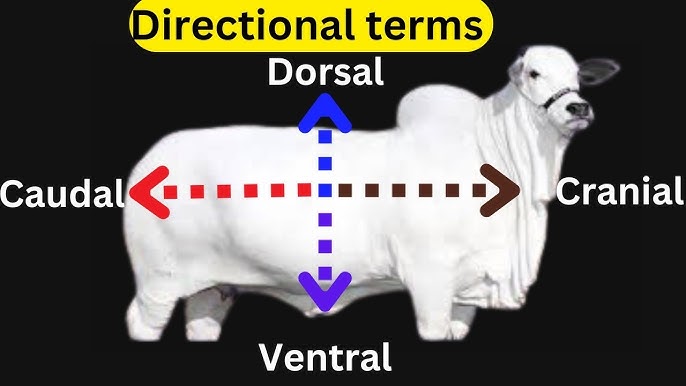
Ventral
Away from the spine
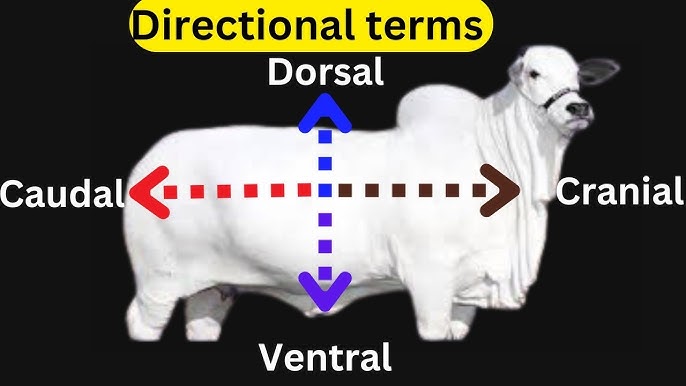
Anterior
“Forward” as an animal is walking
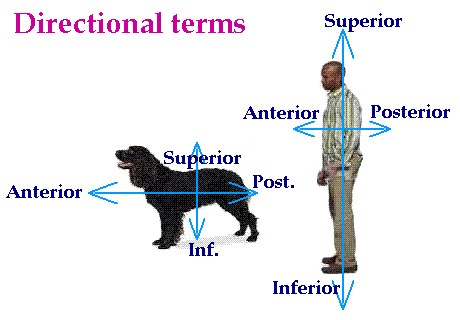
Posterior
“Backward” as an animal is walking
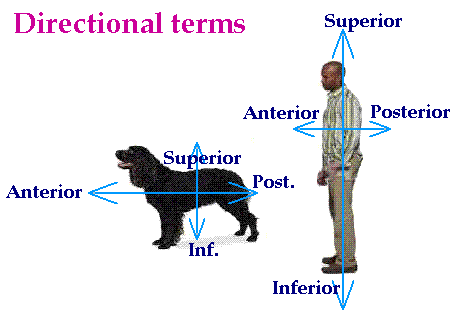
Superior
(When standing) toward top-most section of body in elevation
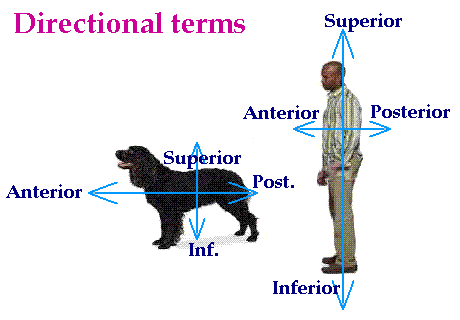
Inferior
(When standing) toward bottom-most section of body in elevation
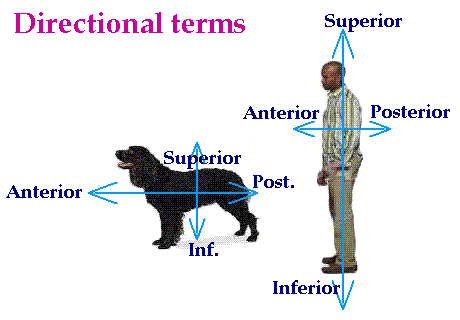
Proximal
Closer to the trunk of the body
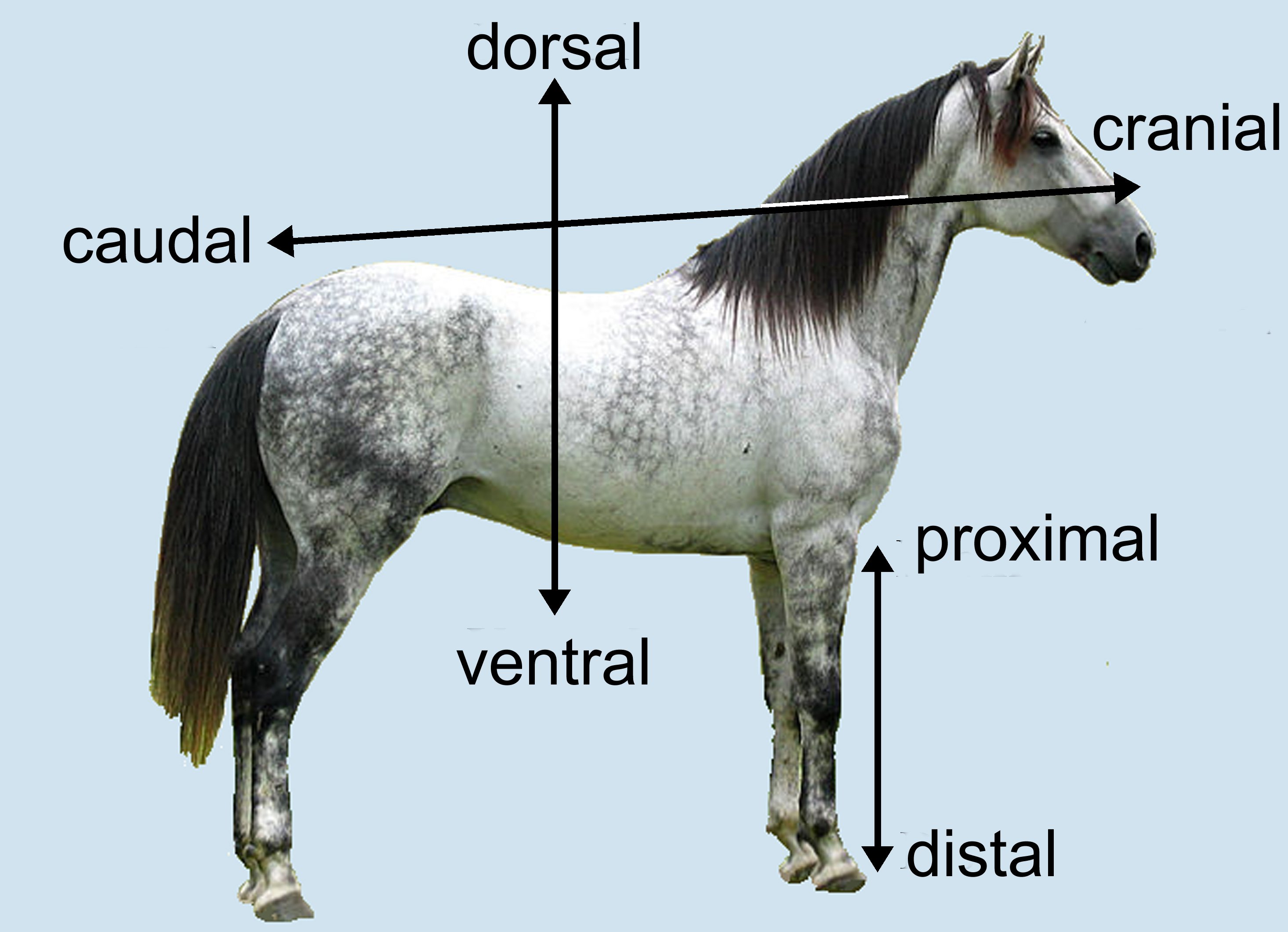
Distal
Further from the trunk of the body
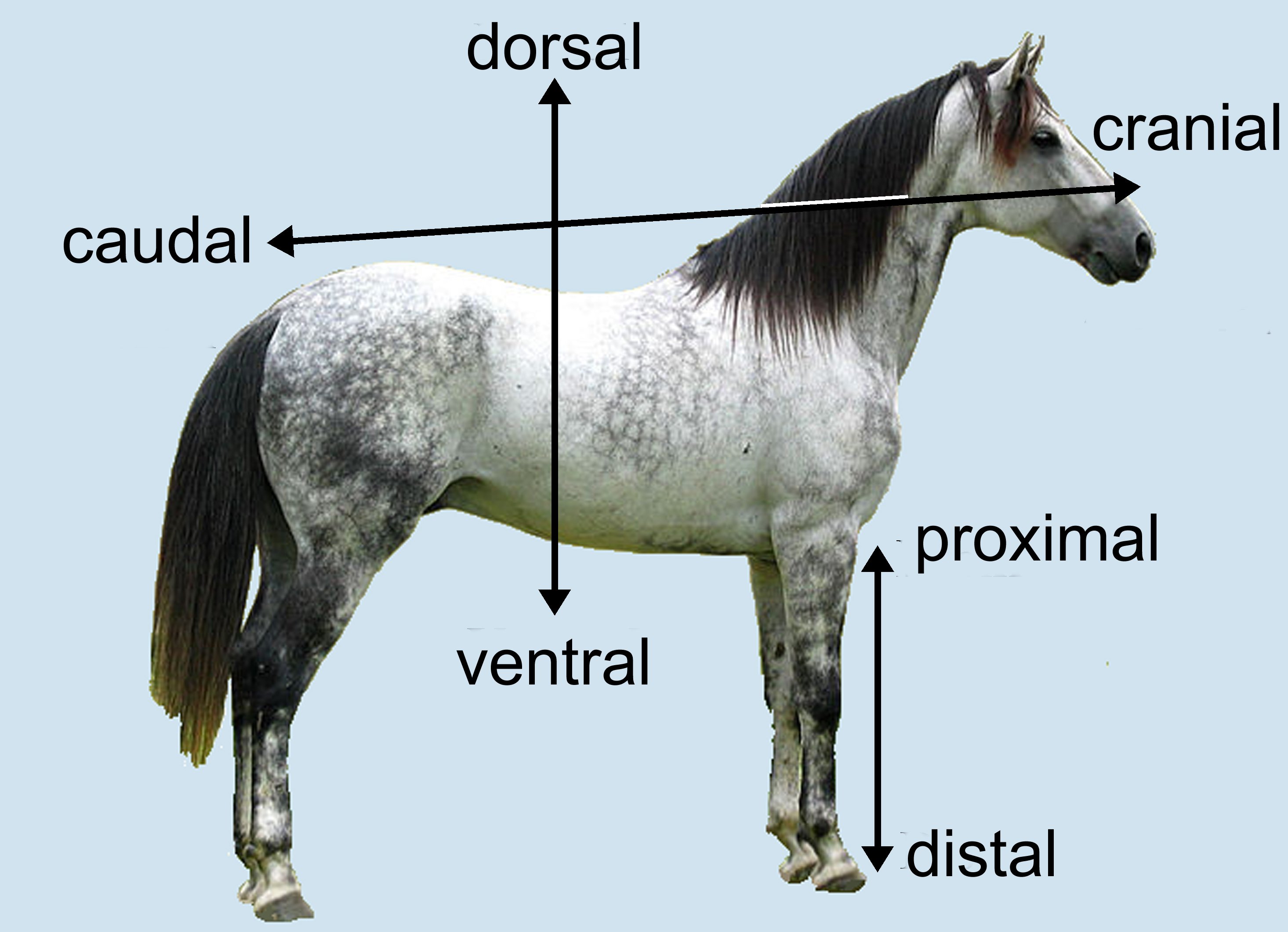
Palmar
Caudal aspect of the forelimb from the carpus down
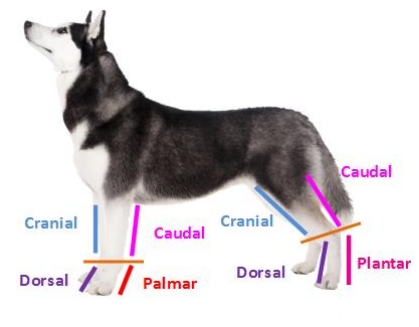
Plantar
Caudal aspect of the hindlimb from the tarsus down
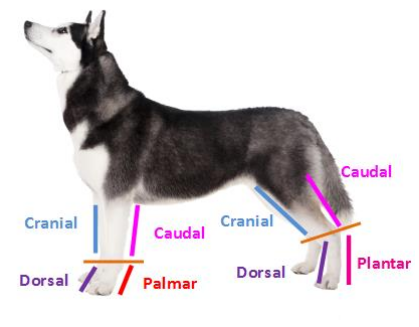
Axial
Aspect closer to the midline of a limb
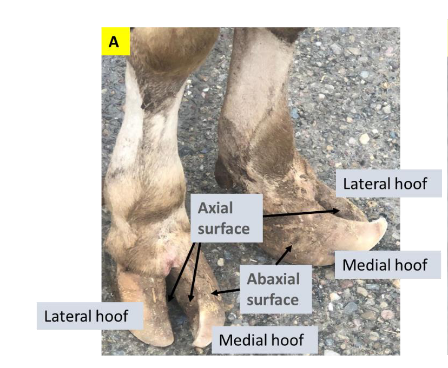
Abaxial
Aspect facing away from the midline of a limb
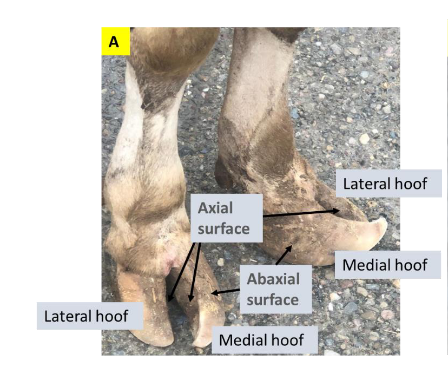
Superficial
Towards the surface of the body
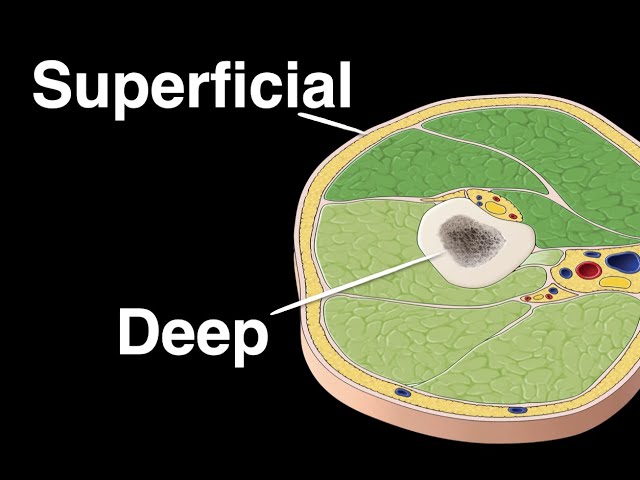
Deep
Away from the surface of the body
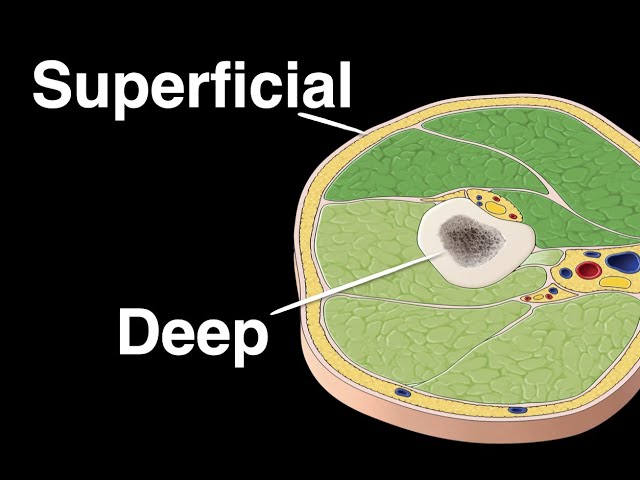
Volar
In a standing animal, the surface touching the ground
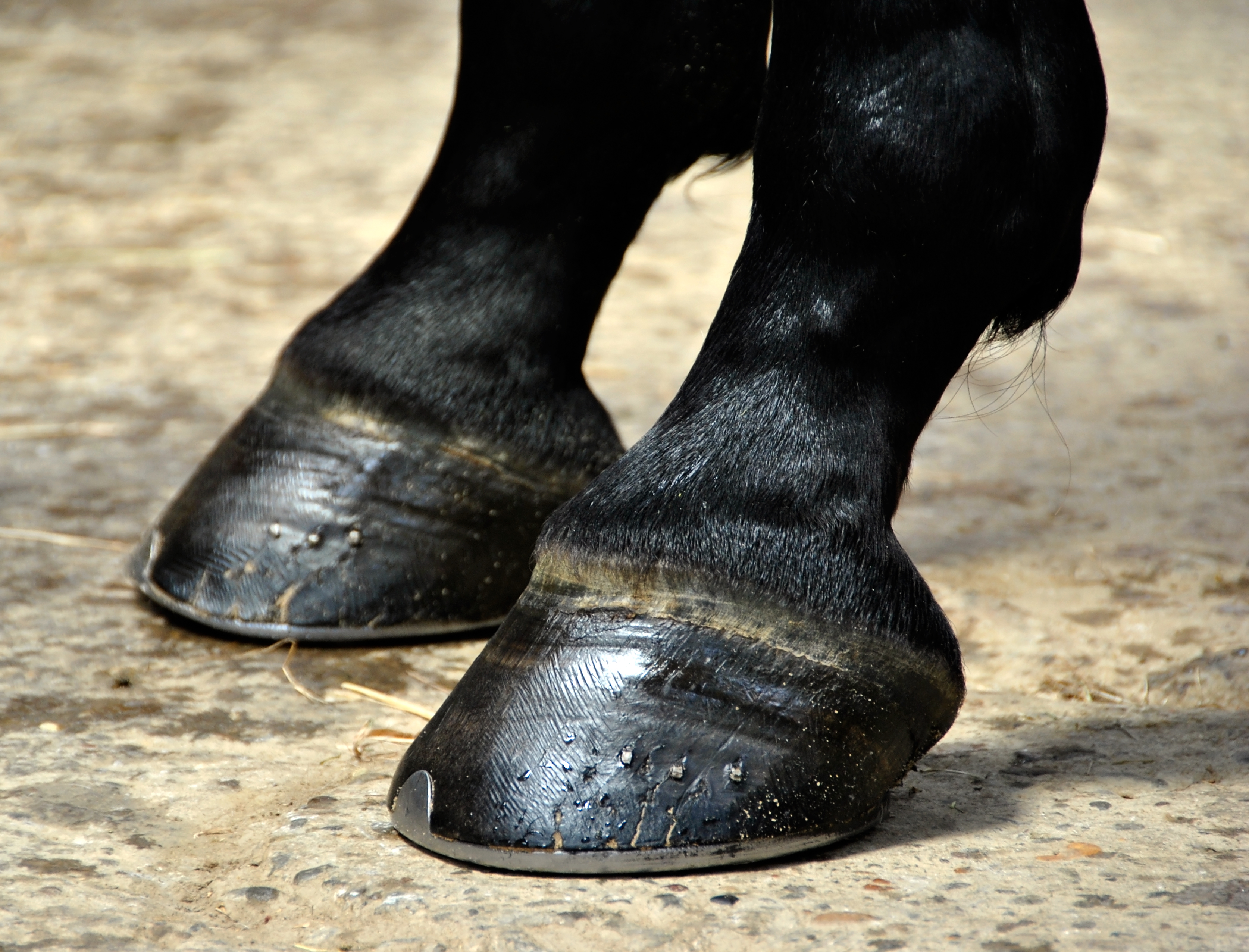
Rostral
On the head, towards the snout
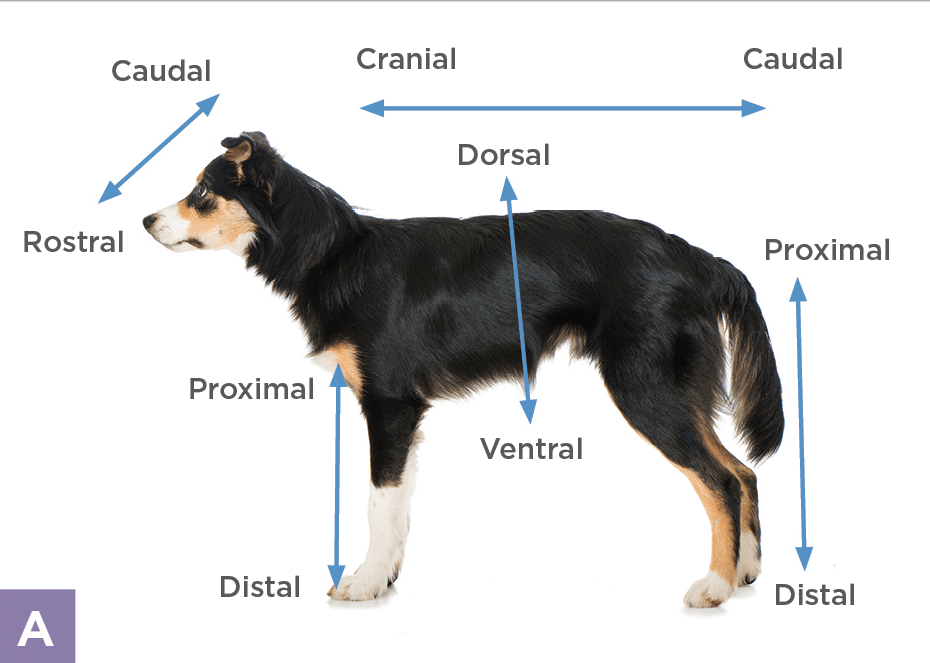
Caudal (on the head)
On the head, away from the snout
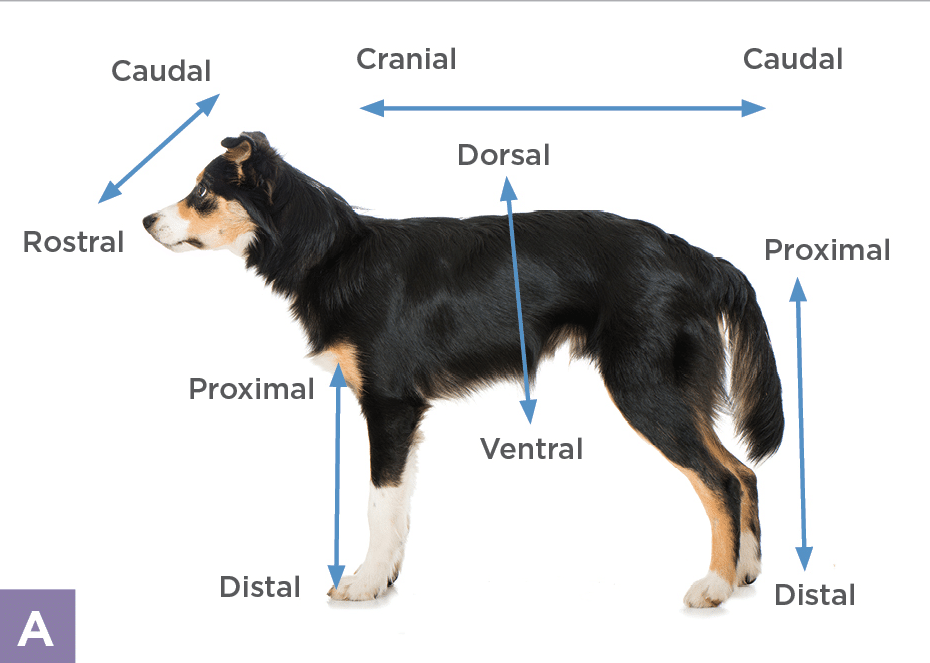
Supine
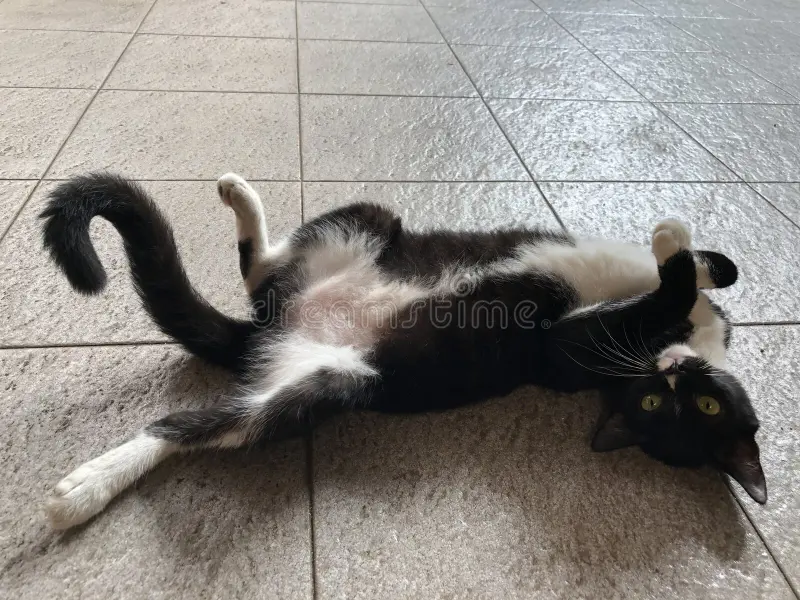
Prone
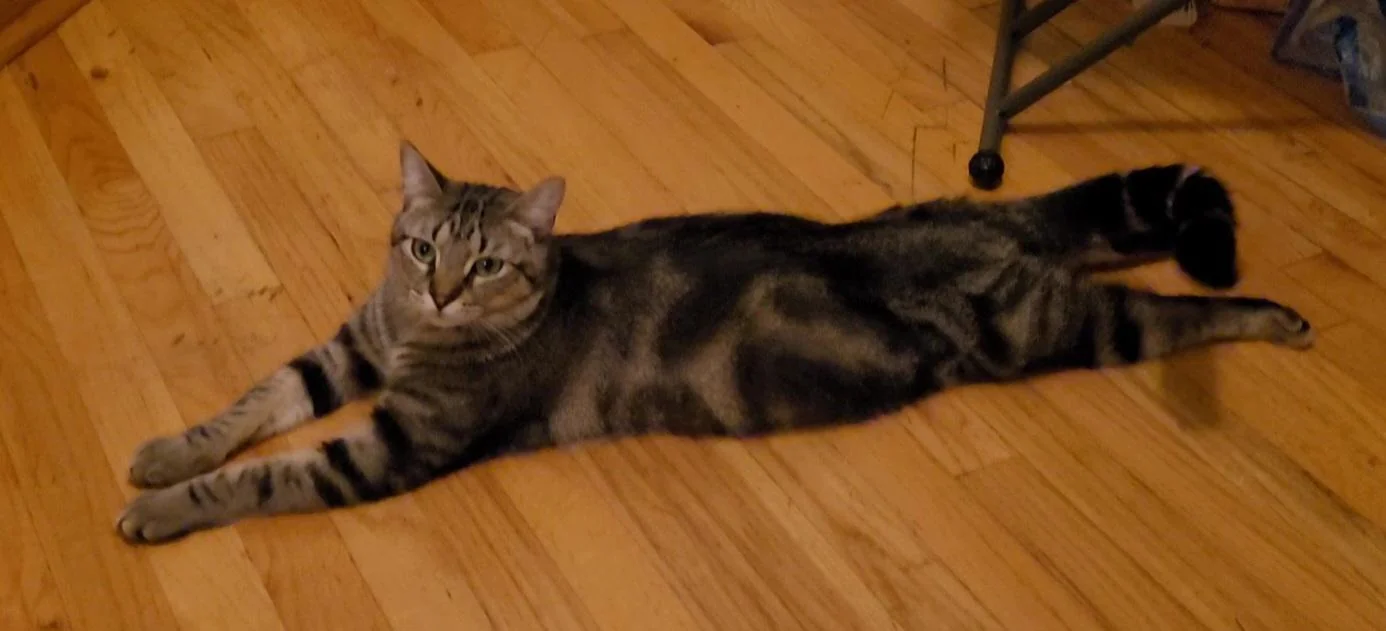
Right Lateral Recumbancy
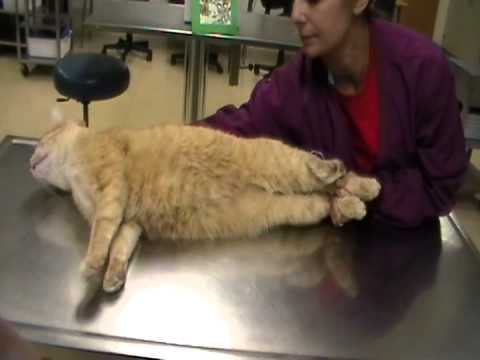
Left Lateral Recumbancy
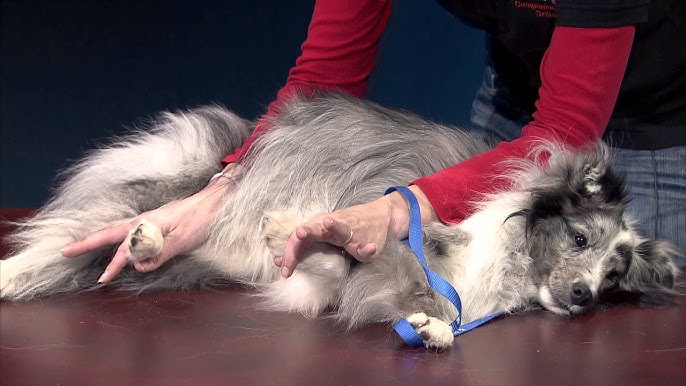
Transverse Plane
Separates body into cranial and caudal parts
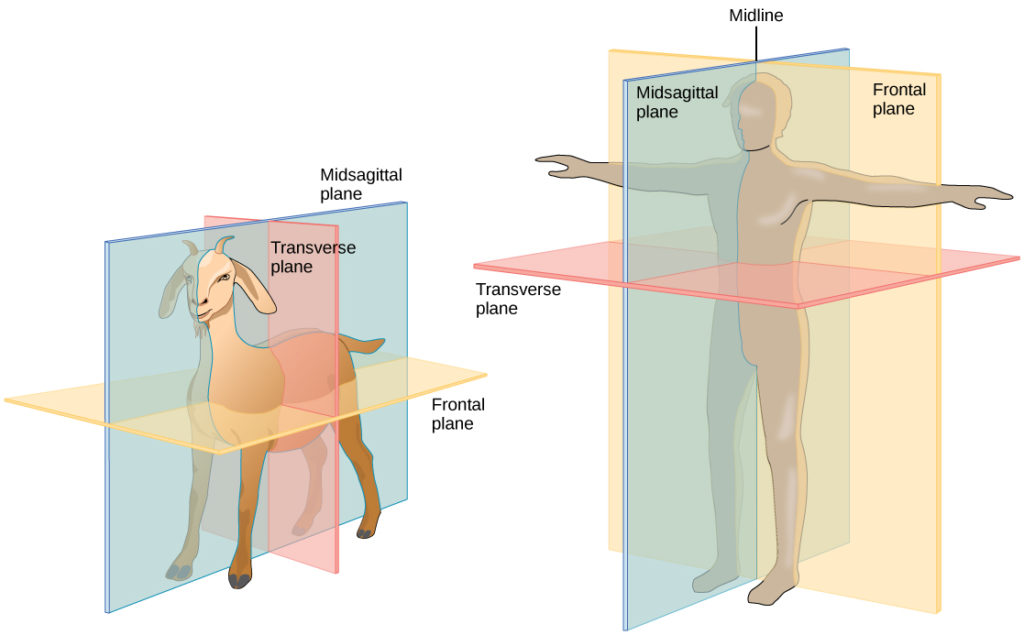
Dorsal Plane
Separates body into dorsal and ventral parts
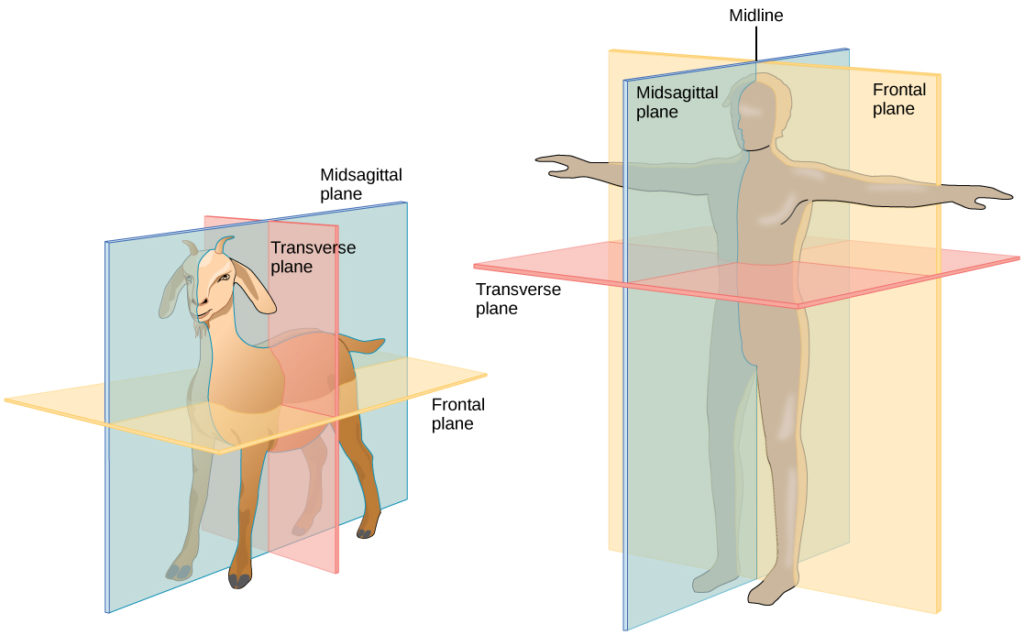
Sagittal Plane
Separates body into left and right parts

Midsagittal Plane
(specifically on the midline) Separates the body into left and right parts
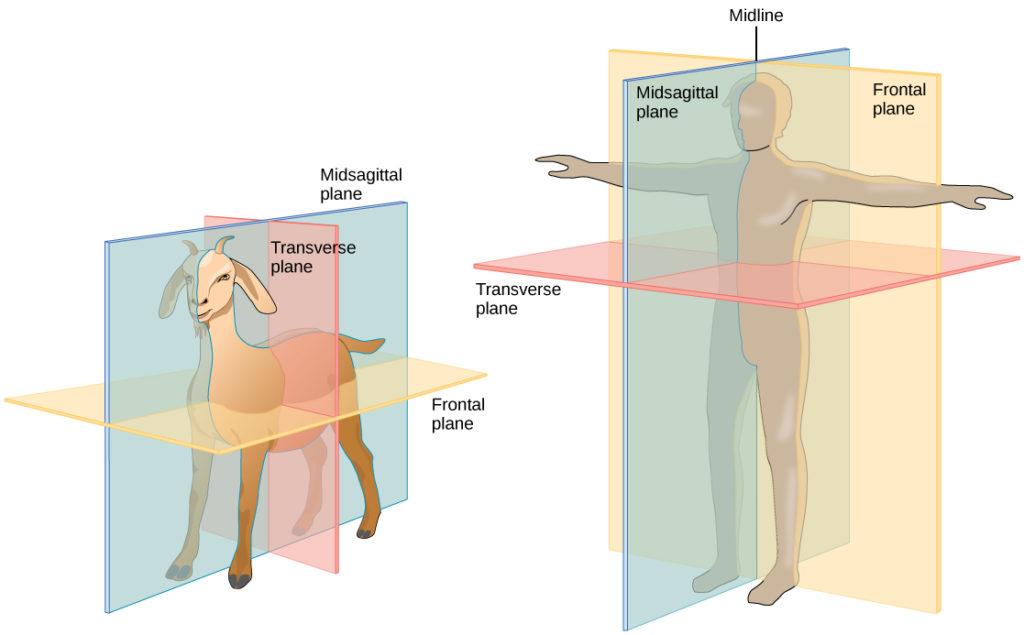
Cranial Segment
Black segment (furthest right)
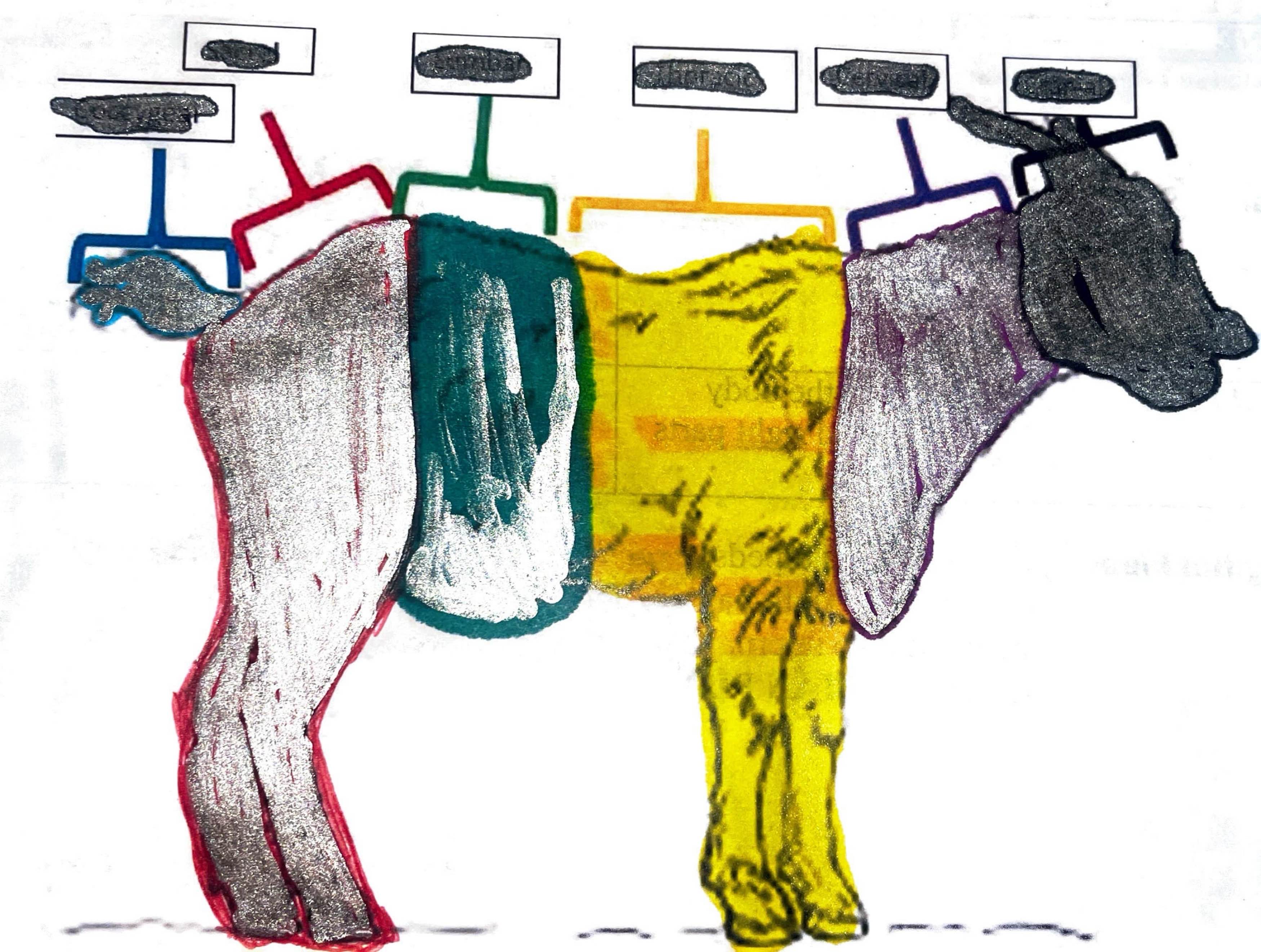
Cervical Segment
Purple Segment (second from the right)
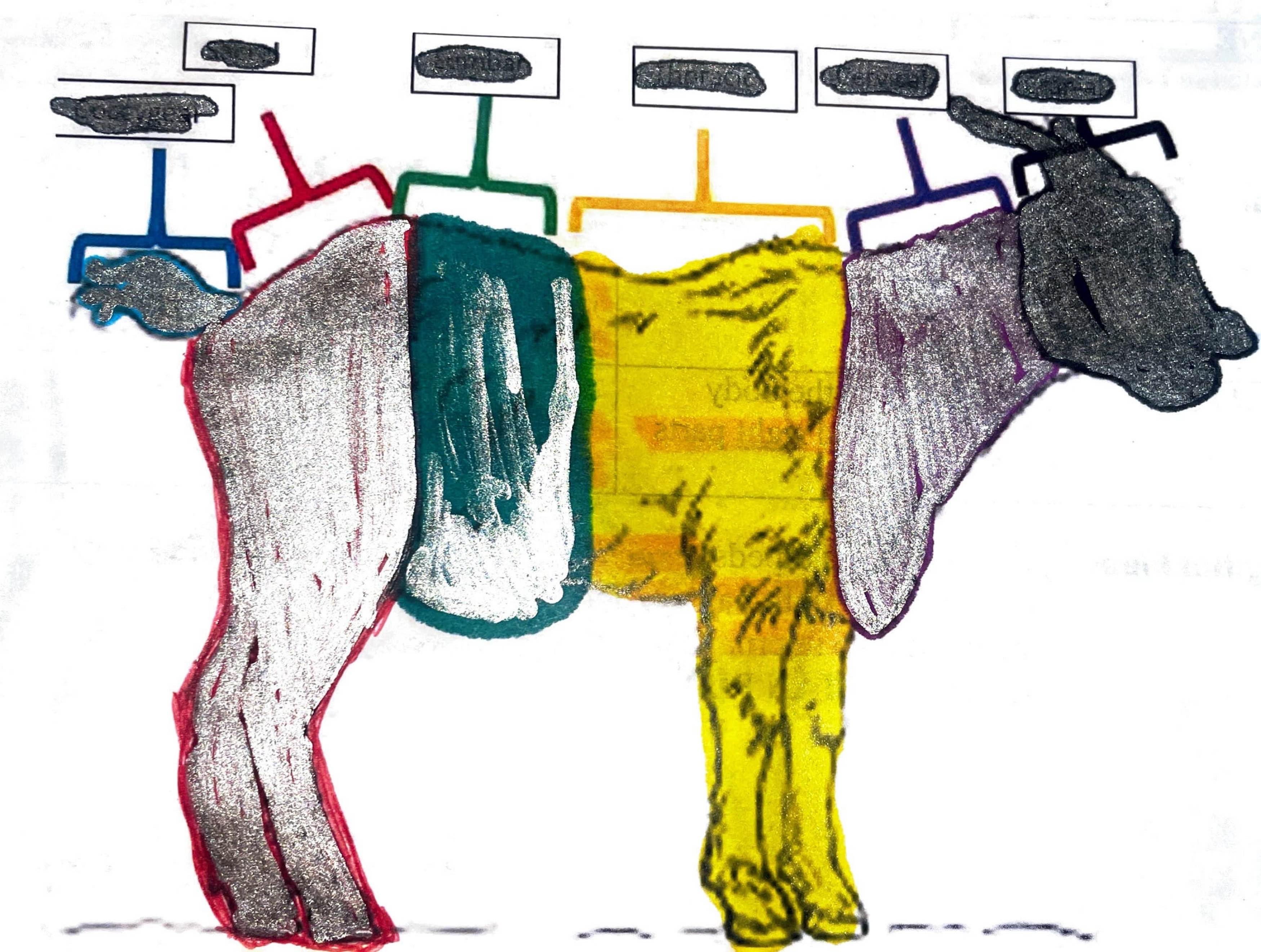
Thoracic Segment
Yellow Segment (Third from the right)
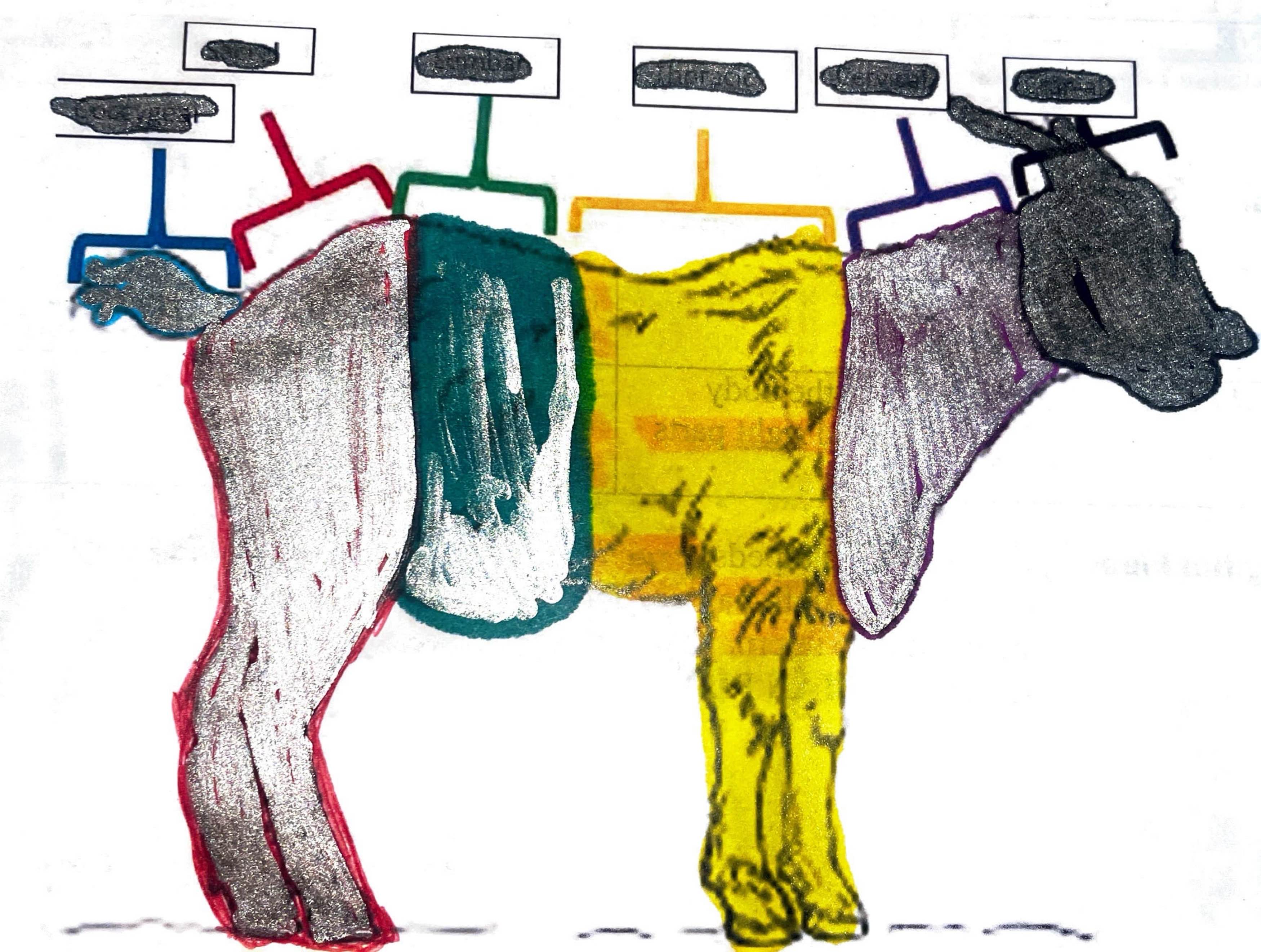
Lumbar Segment
Green Segment (third from left)
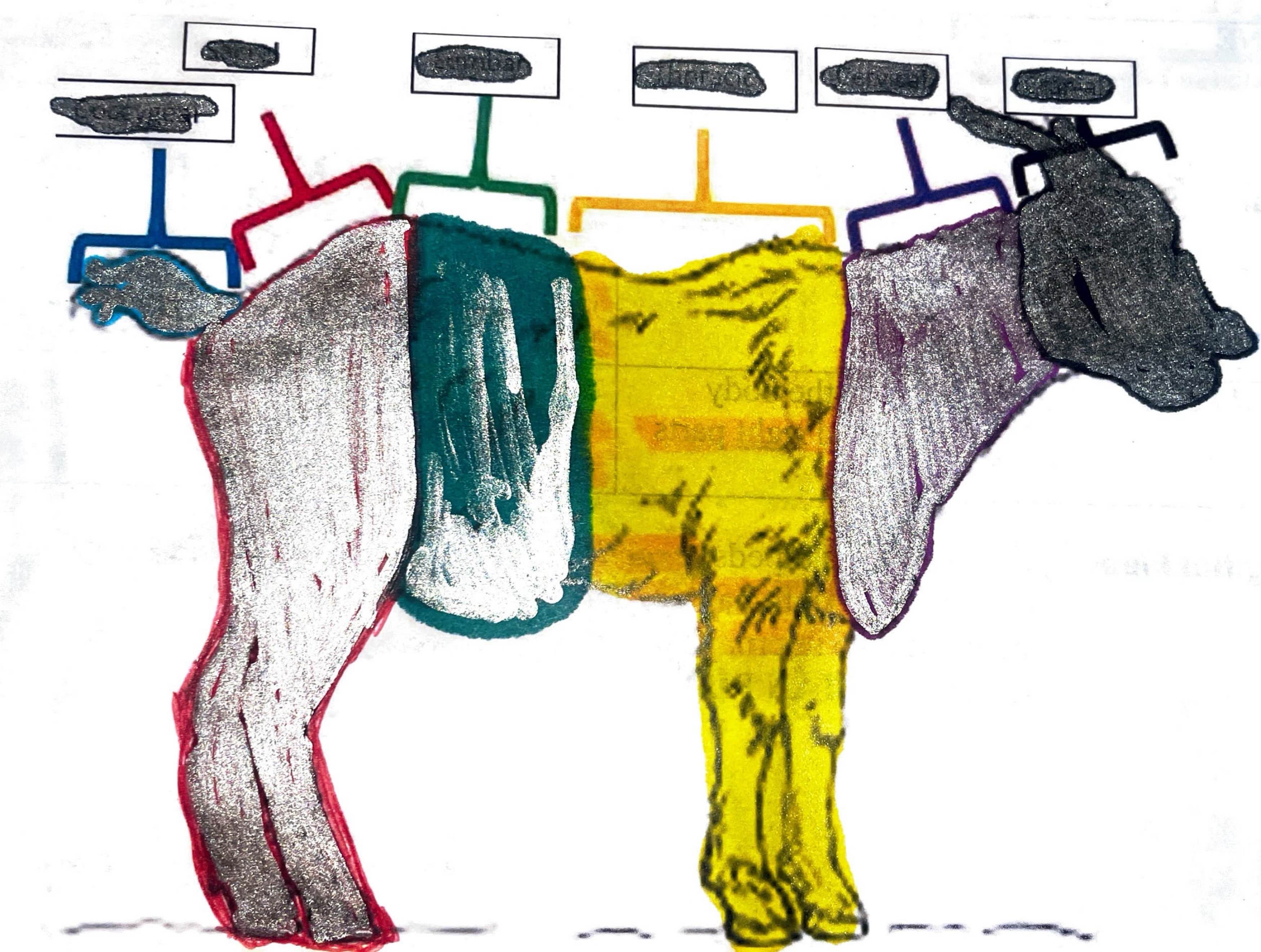
Sacral Segment
Red Segment (second from left)
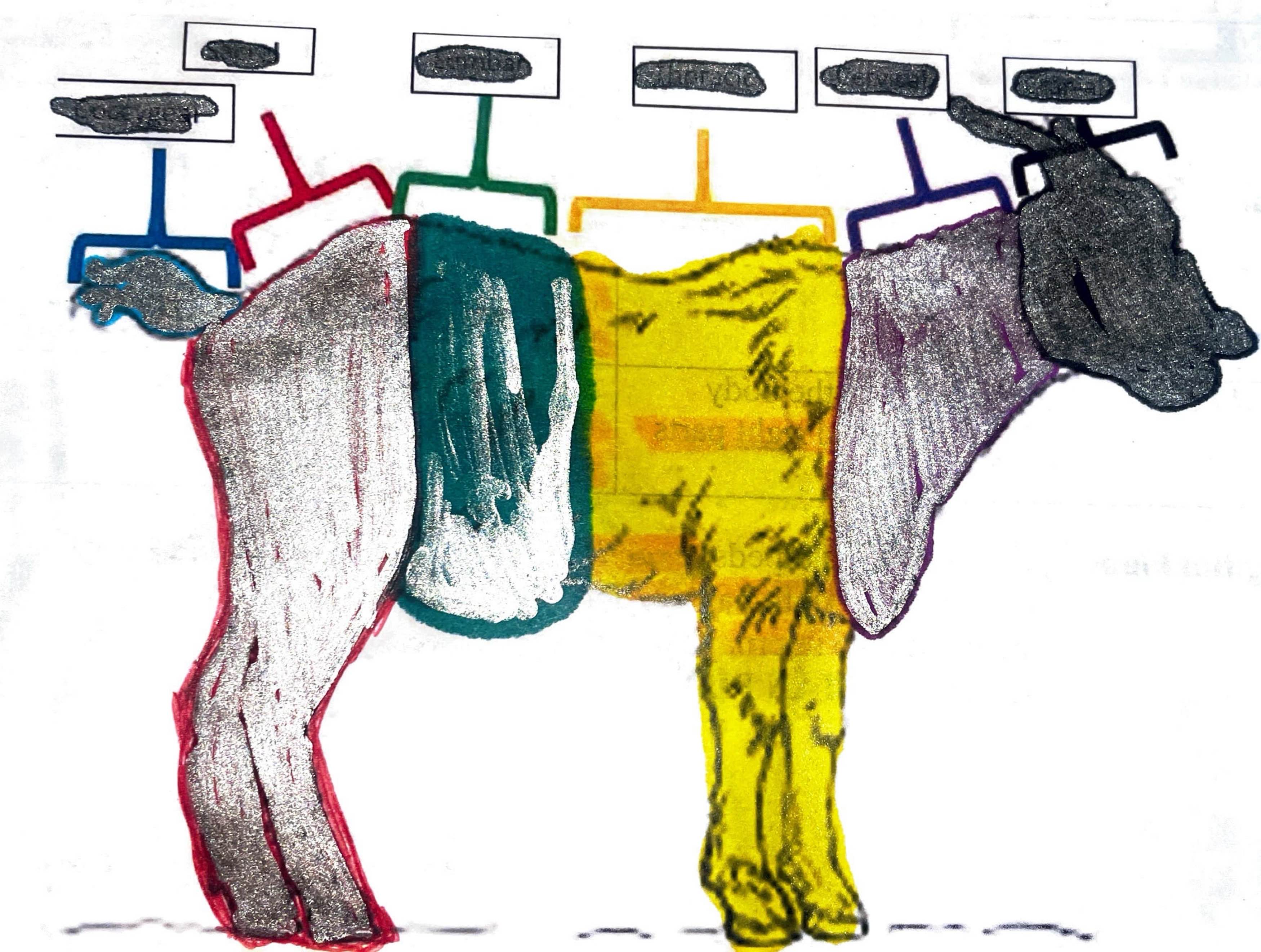
Coccygeal Segment
Blue segment (First on left)
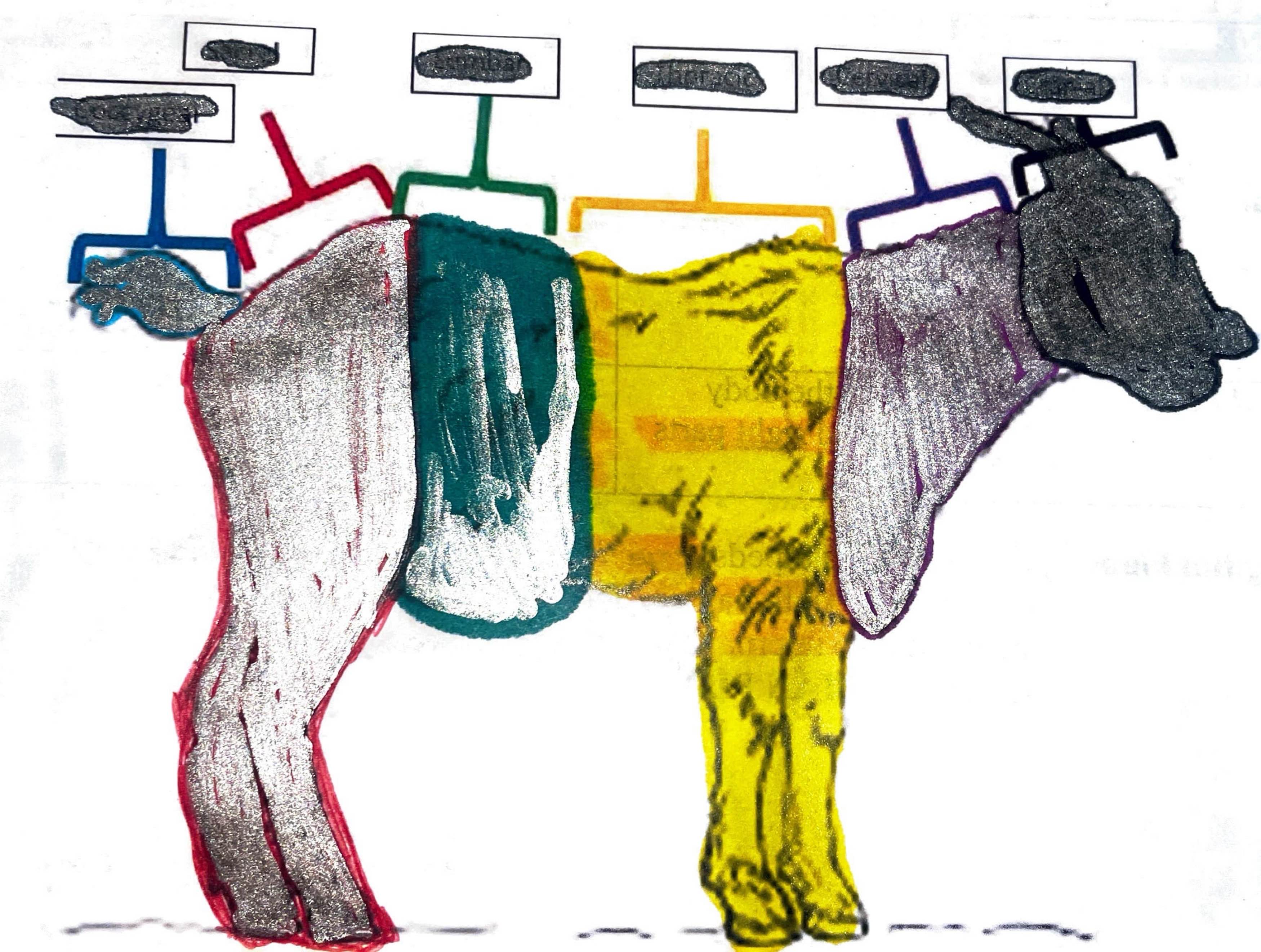
Cranial Cavity
#1
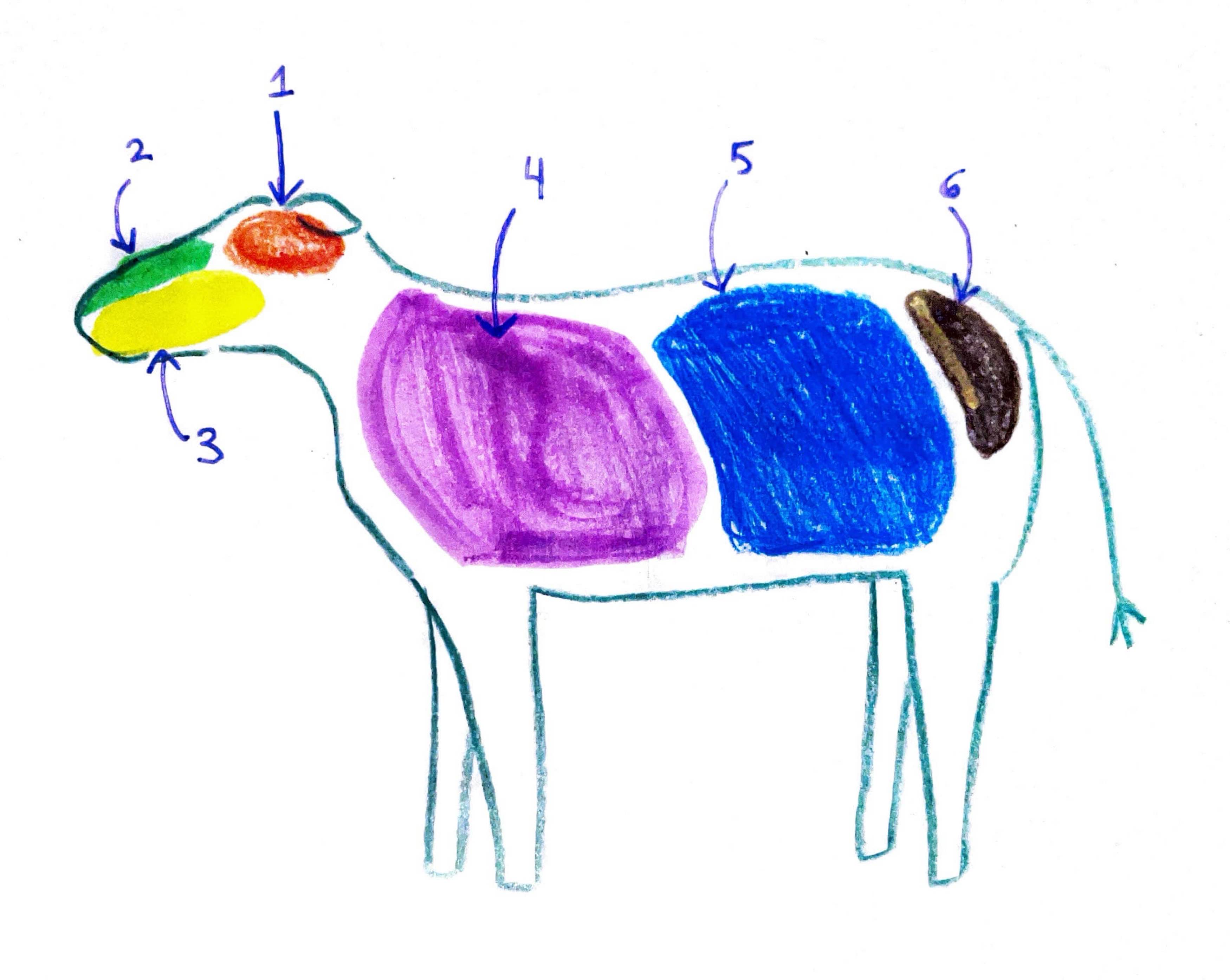
Nasal Cavity
#2
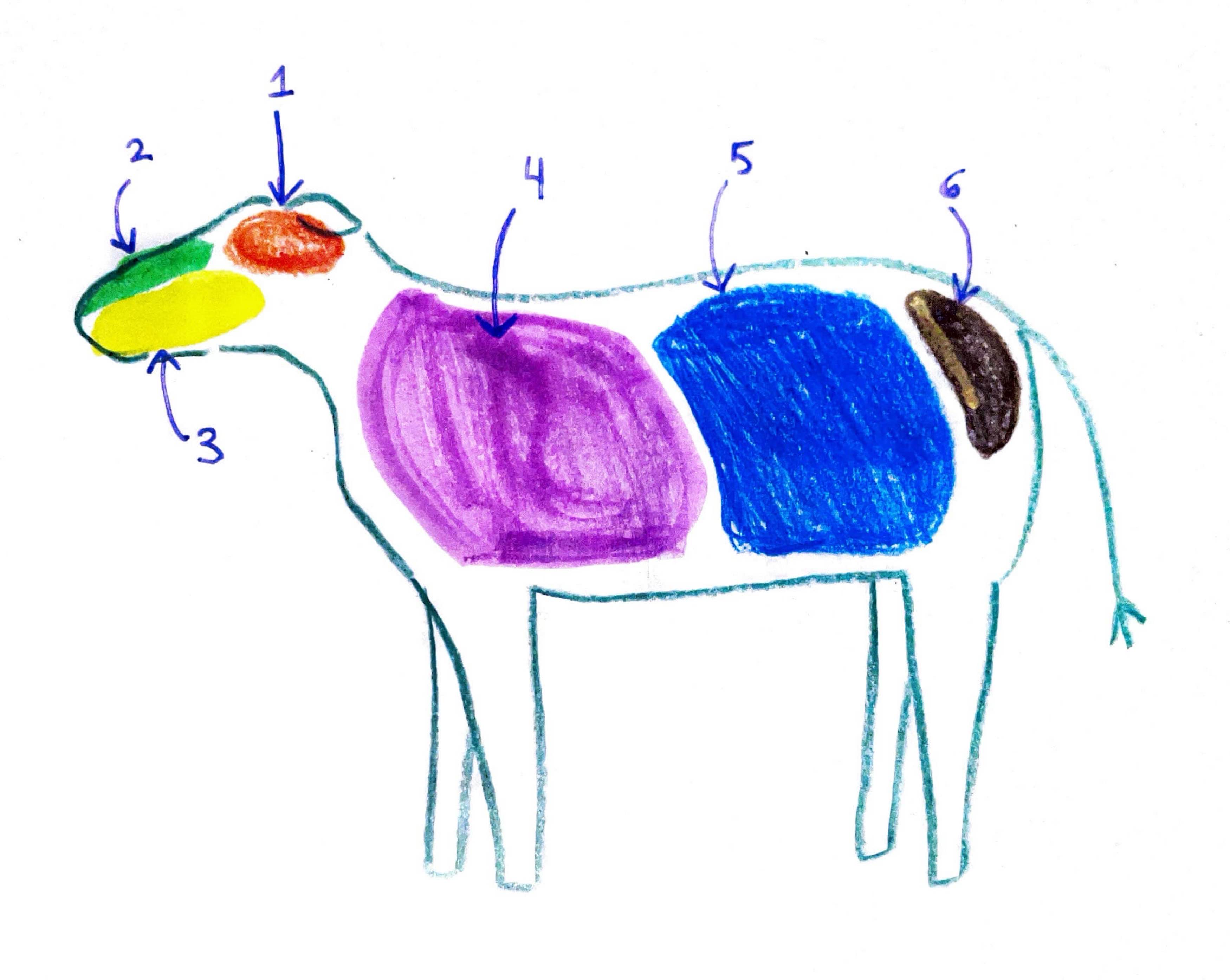
Oral Cavity
#3
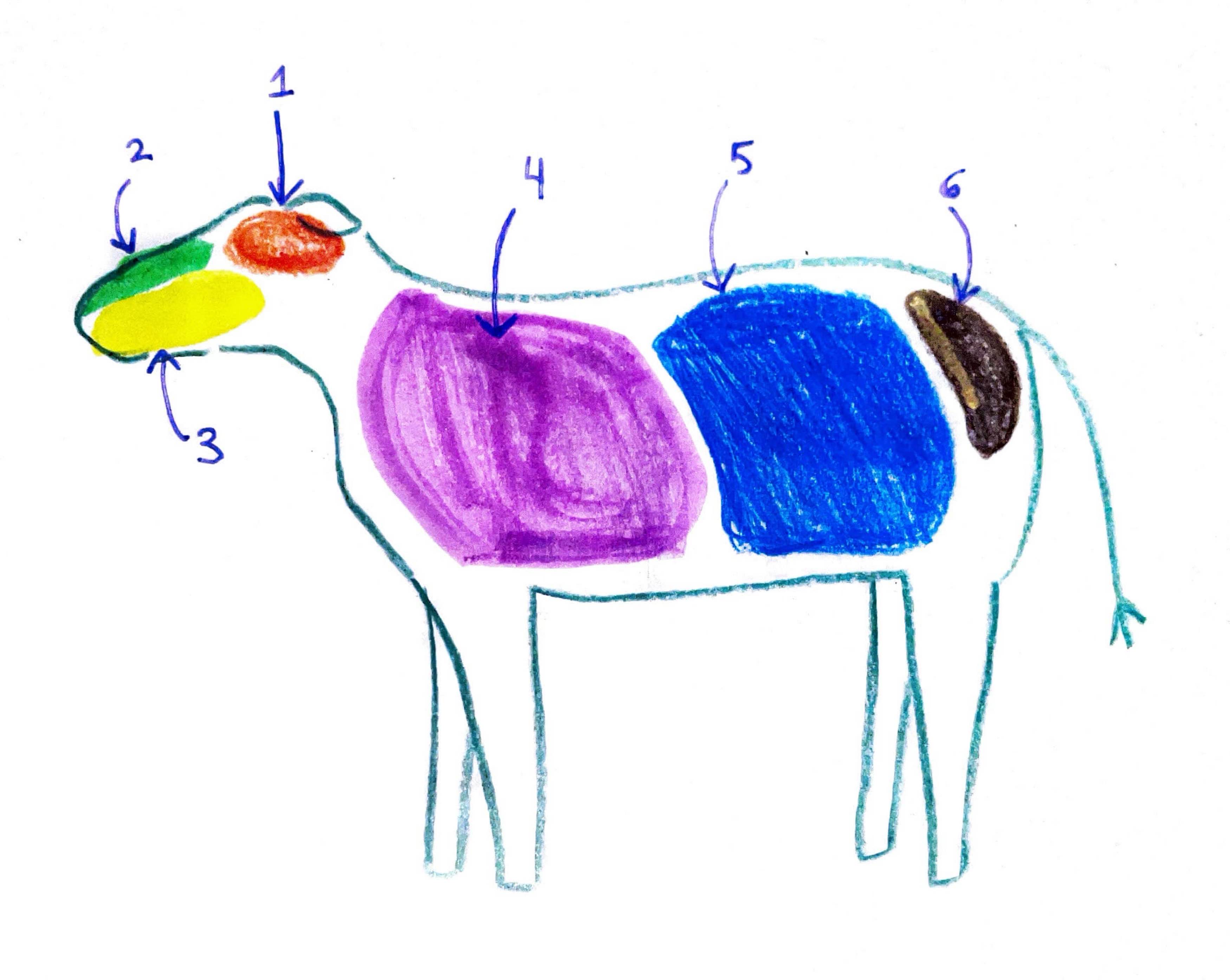
Thoracic Cavity
#4
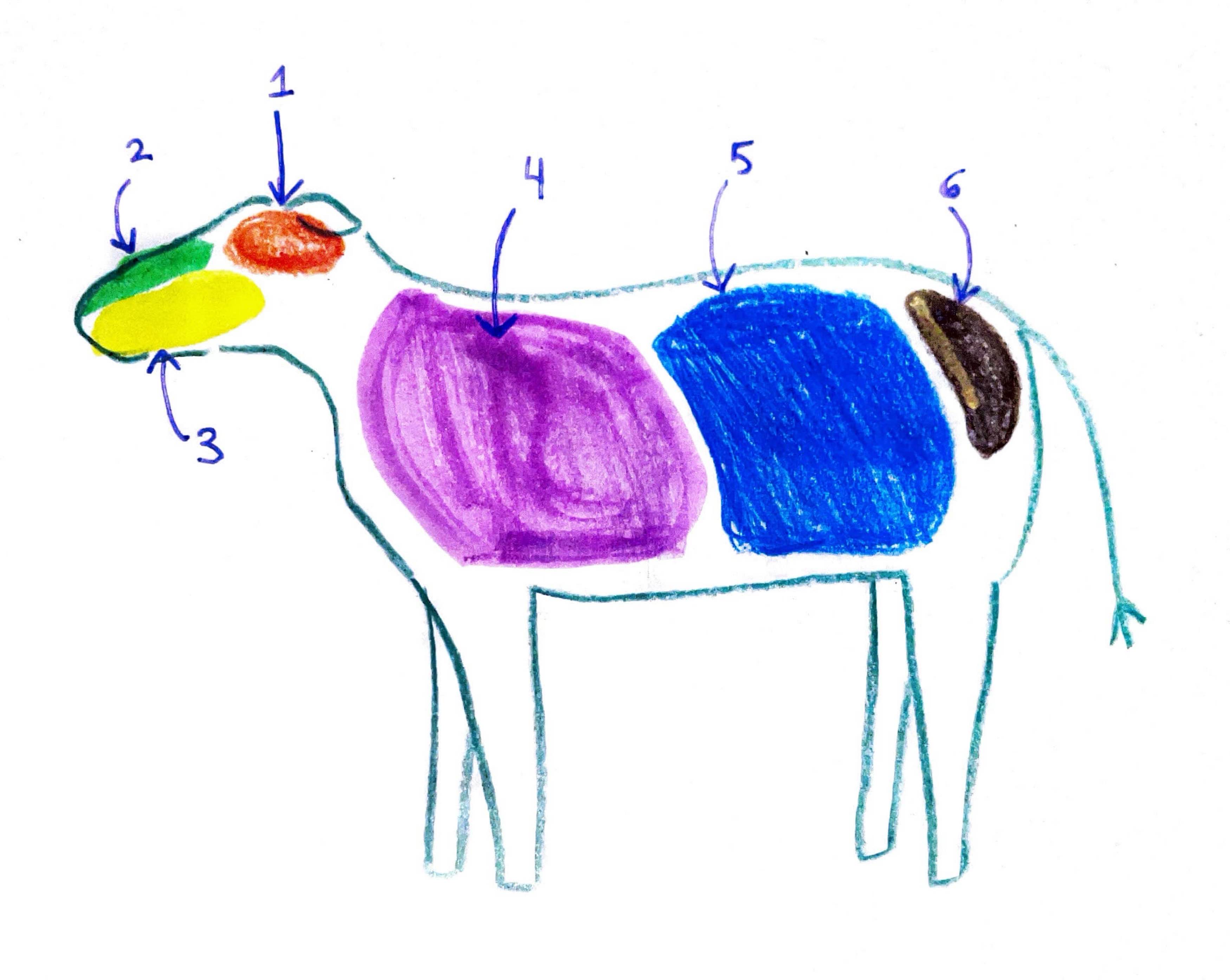
Abdominal Cavity
#5
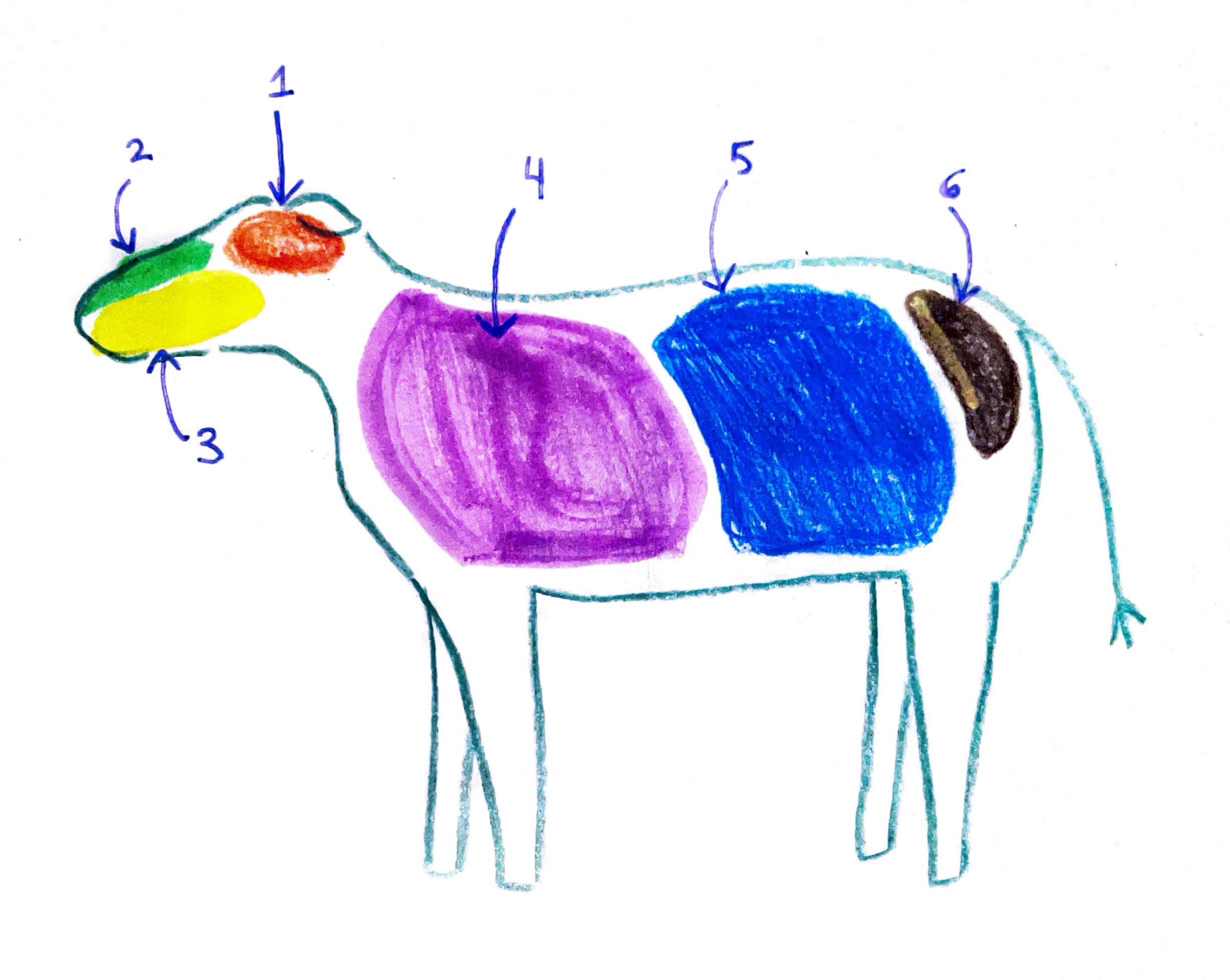
Pelvic Cavity
#6
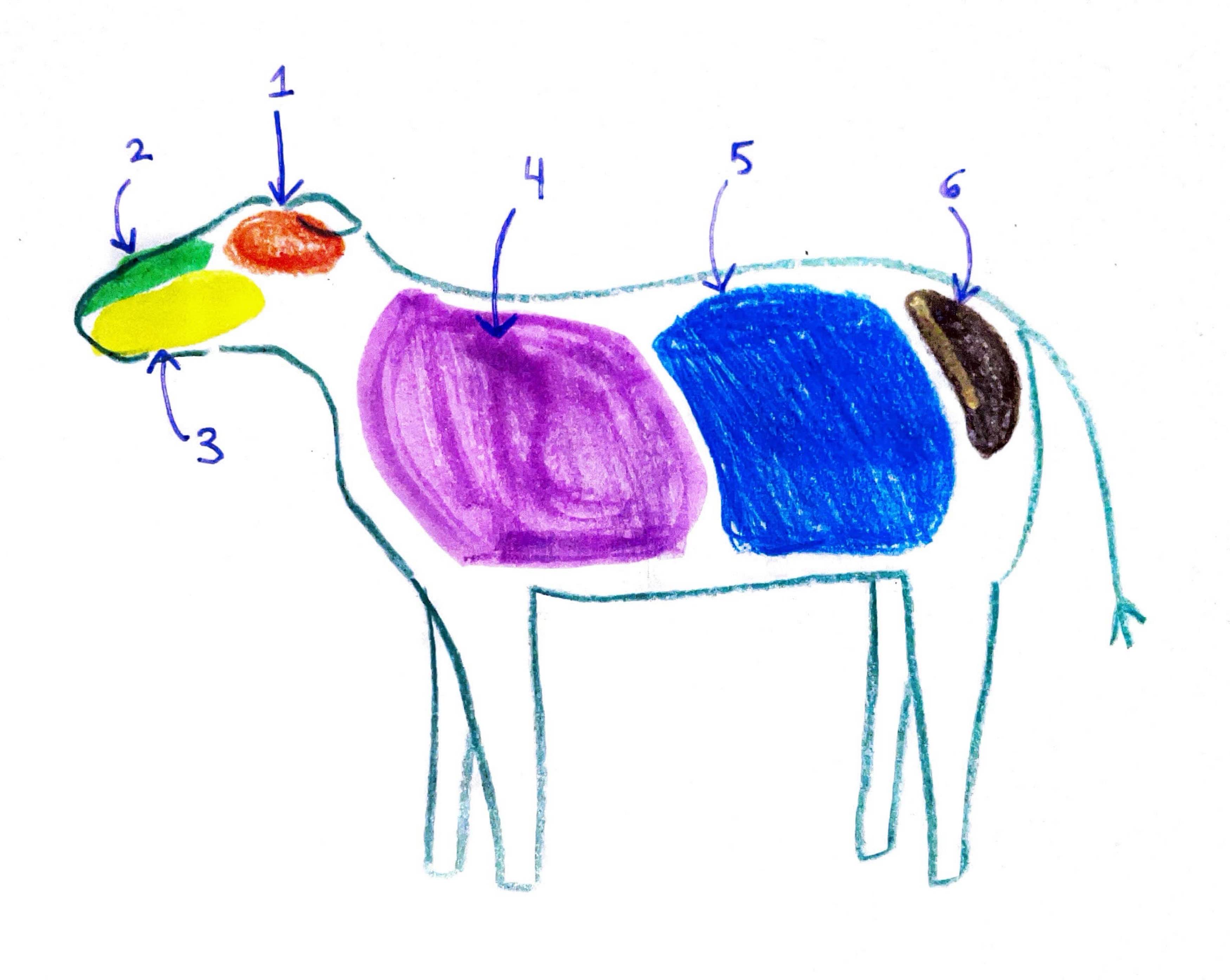
Epidermis
Top layer of skin
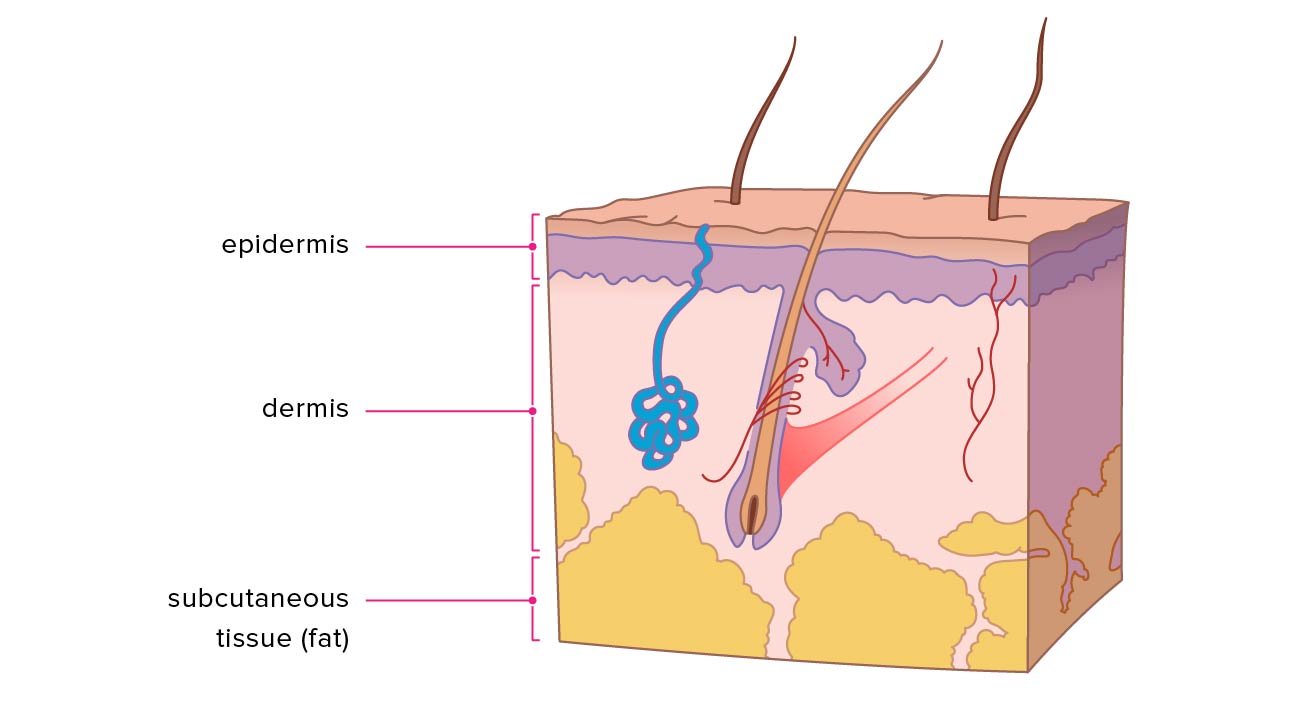
Dermis
Inner layer of skin
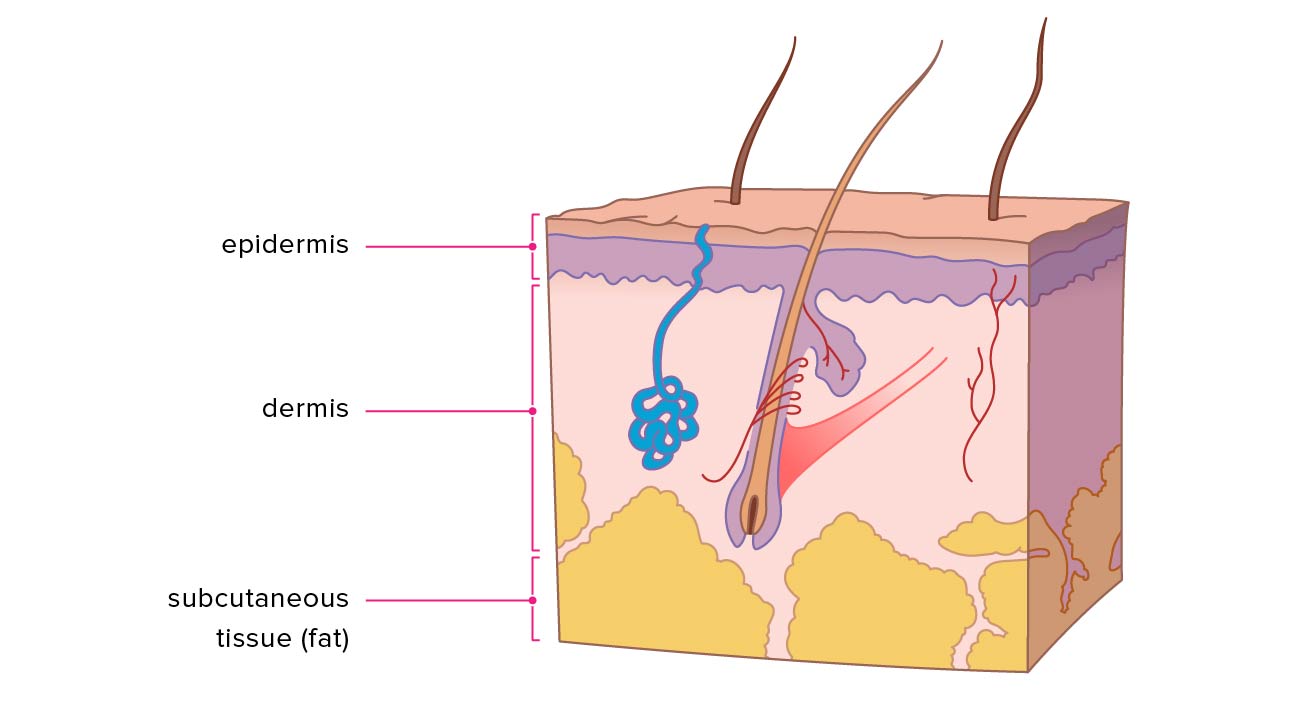
Arrector Pili muscle
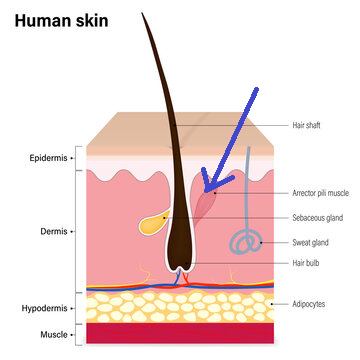
Sebaceous Gland
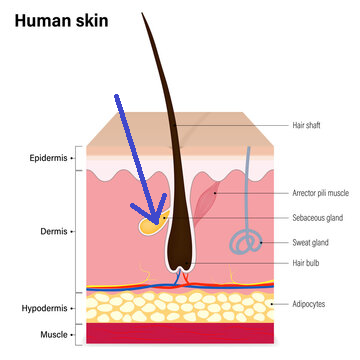
Heart
(on rat)
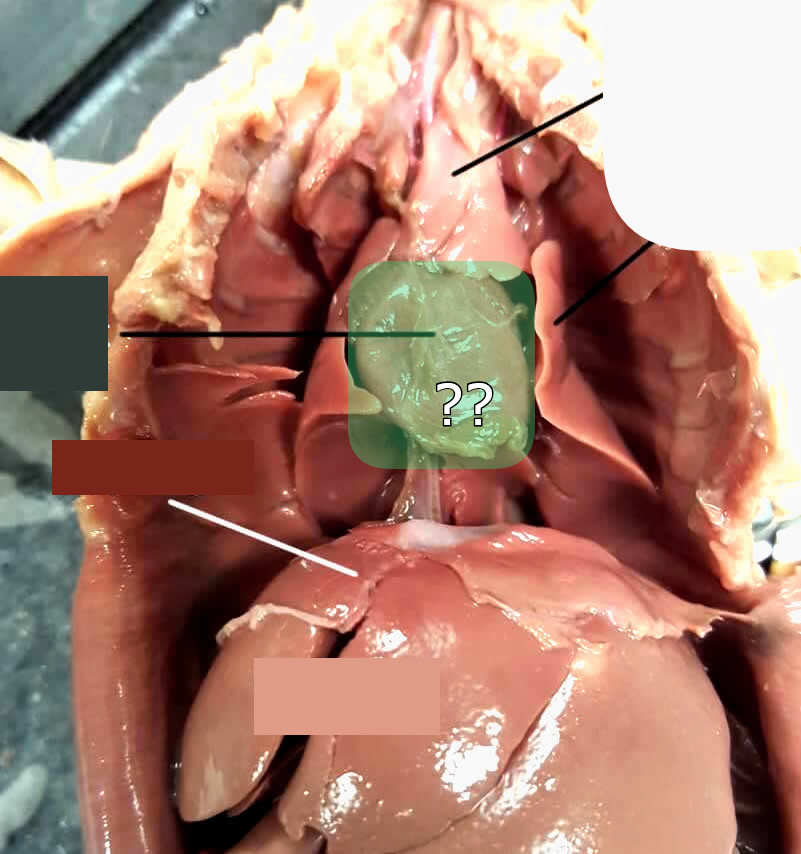
Lungs
(on rat)
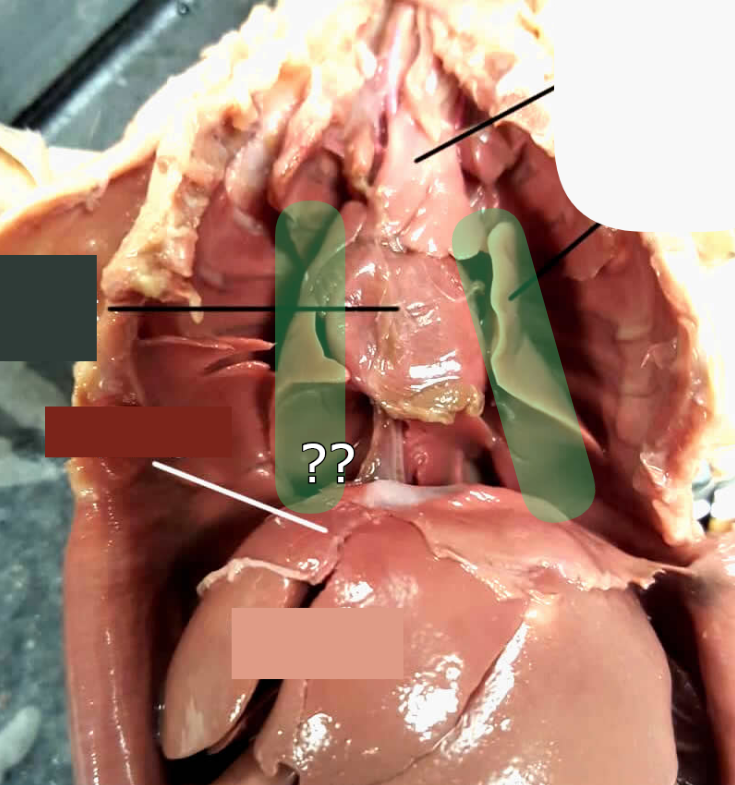
Trachea
#1
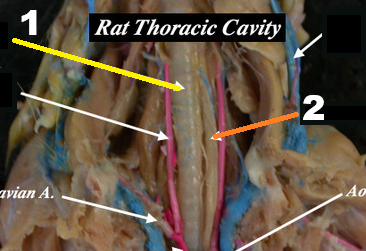
Esophagus
#2
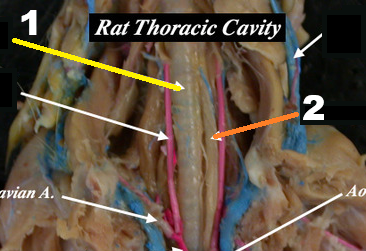
Liver
(on rat)

Stomach
#2
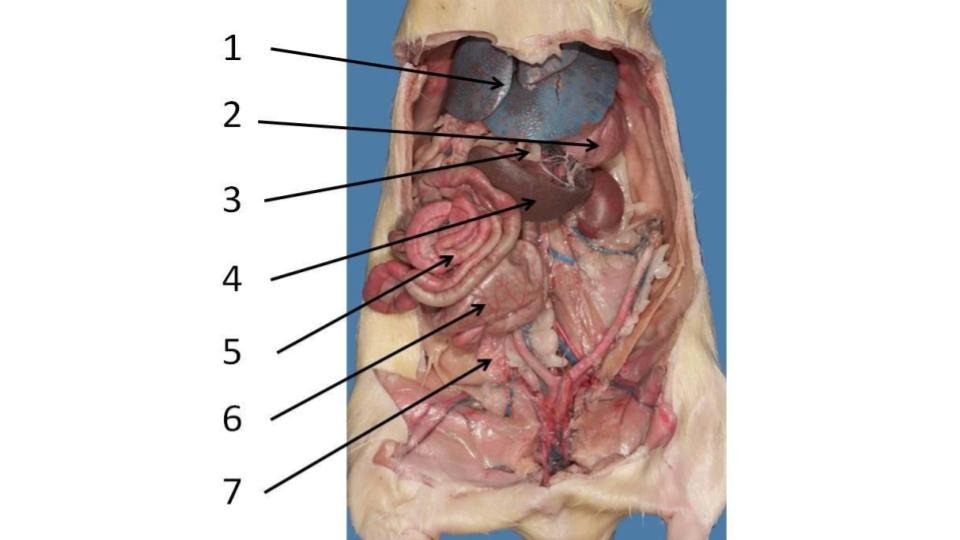
Spleen
#4

Small Intestines
#5
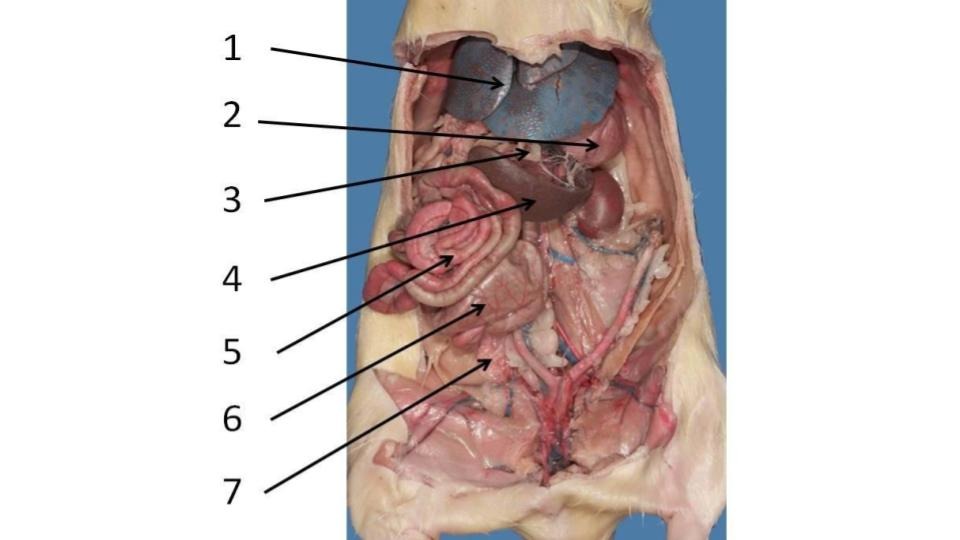
Cecum
#6
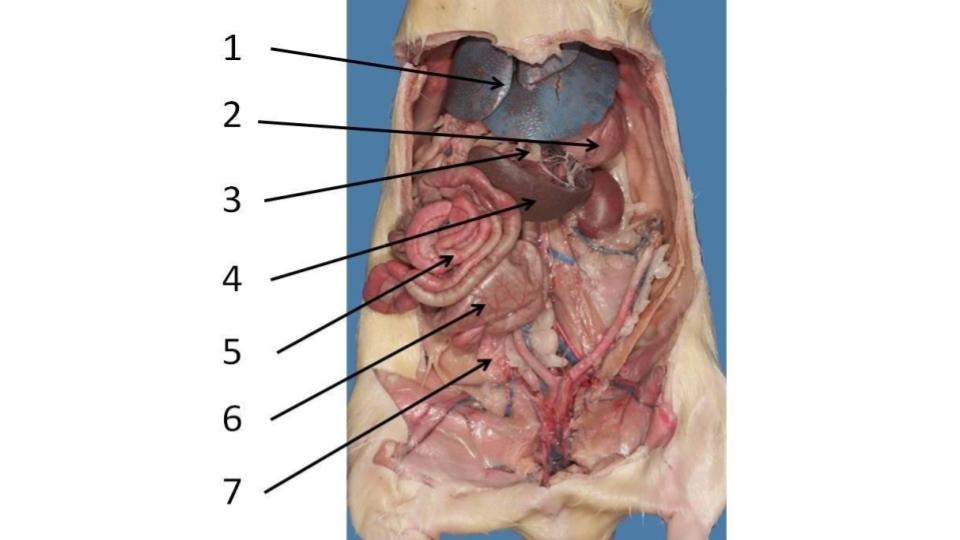
Large Intestines
#7
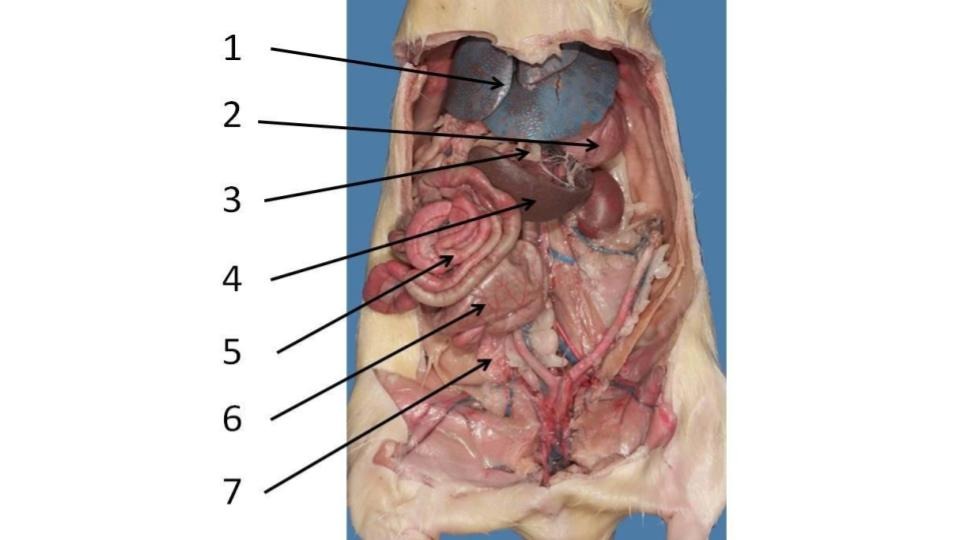
Pericardium
The tissue directly adhered to the heart (you can’t see it, but the the question will ask what it is, probably in the context of the rat)
Anus
#2 (Dorsal to the vaginal opening. This is on a female rat)
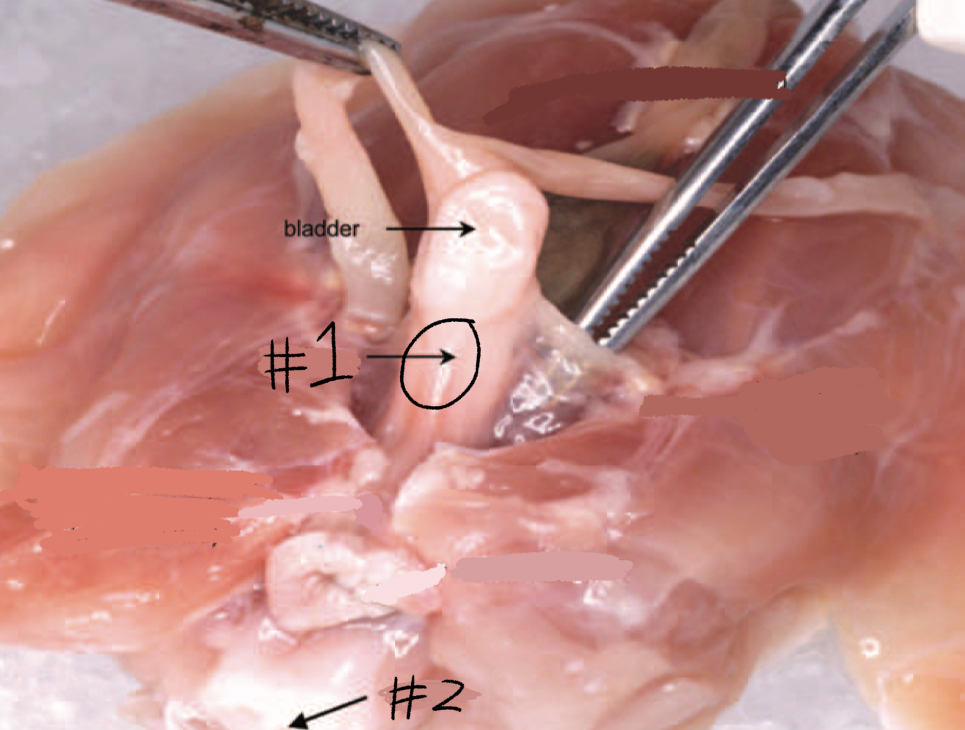
Ovaries
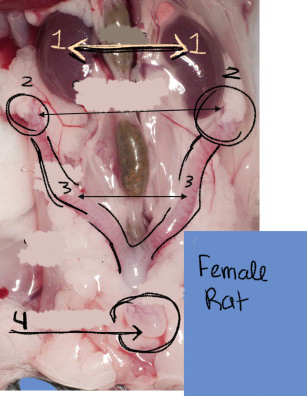
Testes
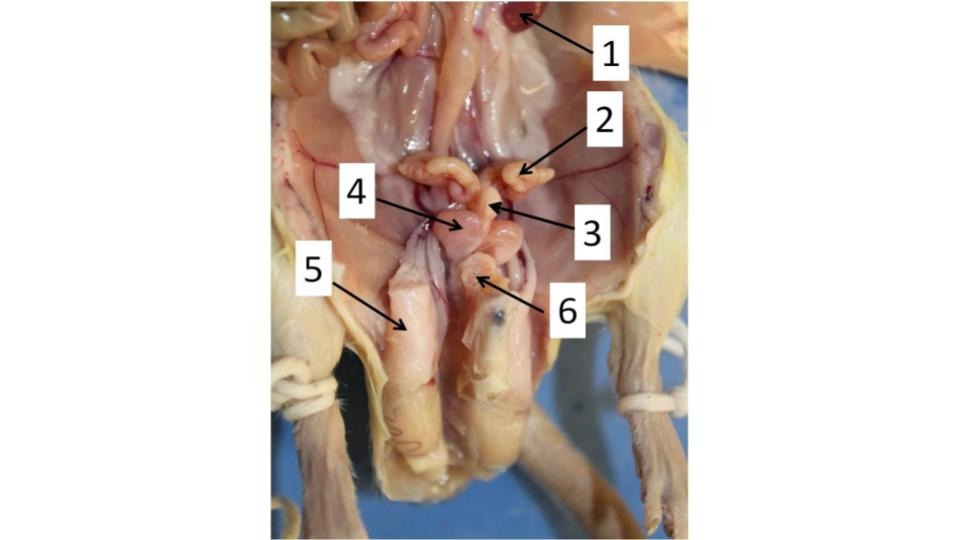
Uterus (uterine horns)
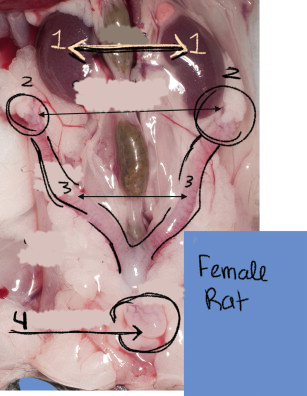
Kidneys
#1
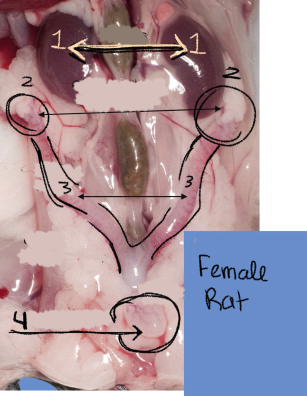
Ureters
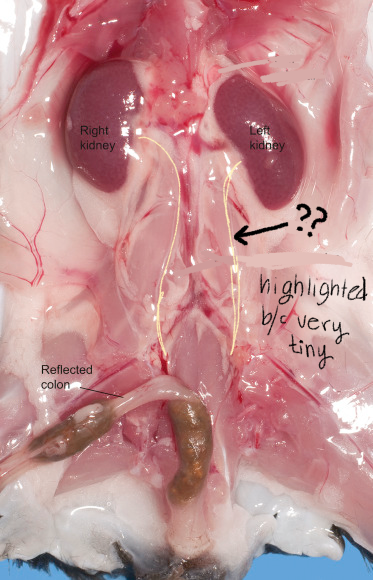
Urinary Bladder
#3
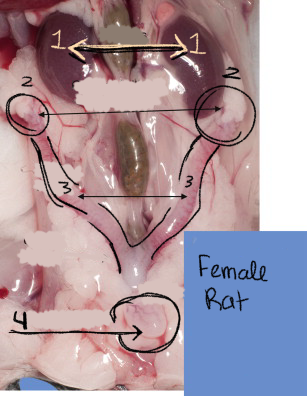
Urethra
#1 (Caudal to the urinary bladder- this is on a female rat)
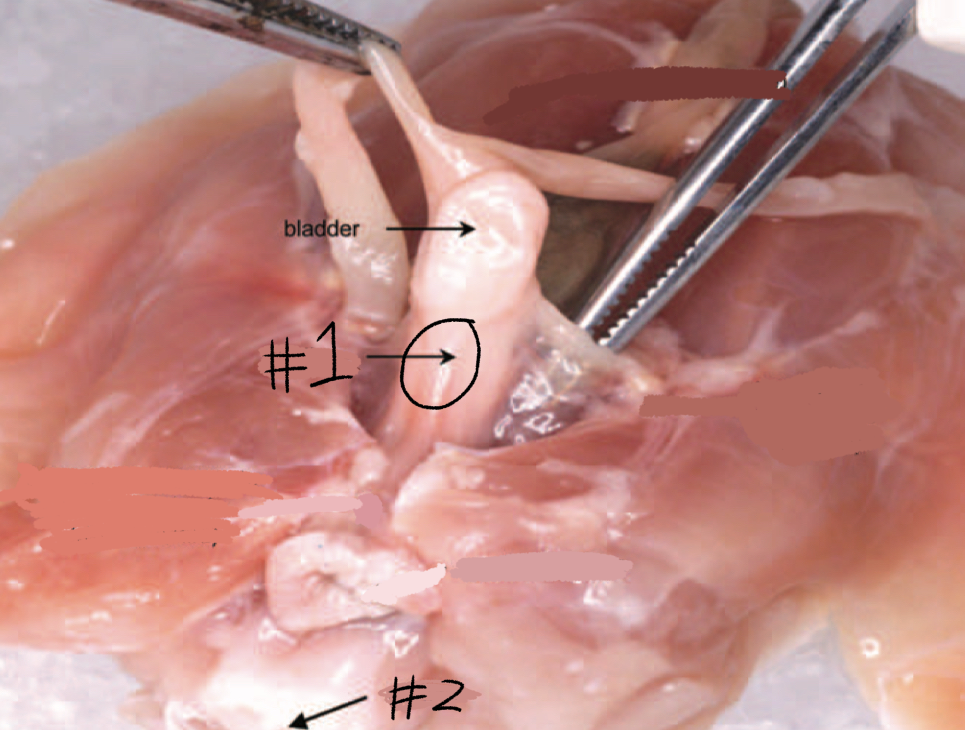
Brain
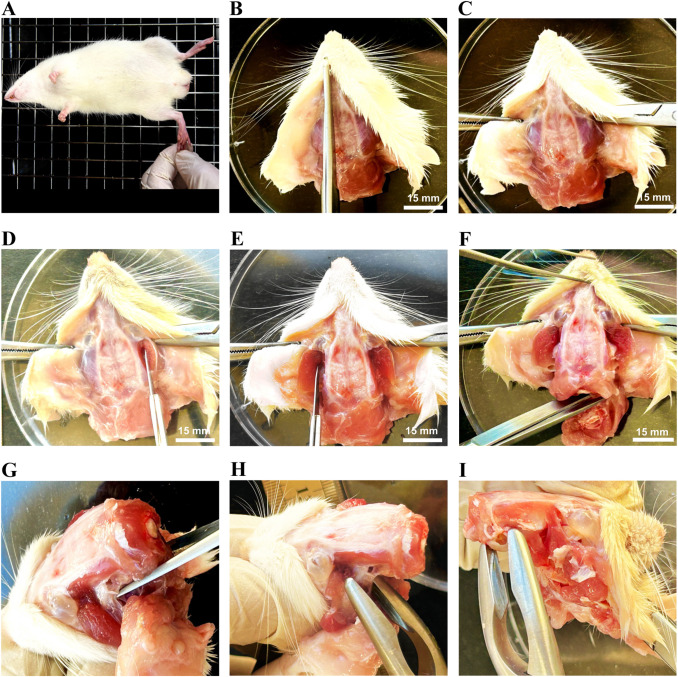
Foramen Magnum
Orbit
Tympanic Bulla
Occipital Condyles
Hard Palate
Zygomatic Arch
9/10 together
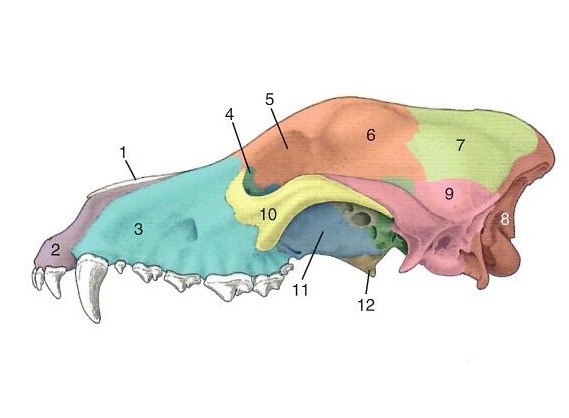
Frontal Bone
#6

Nasal Bone
#1
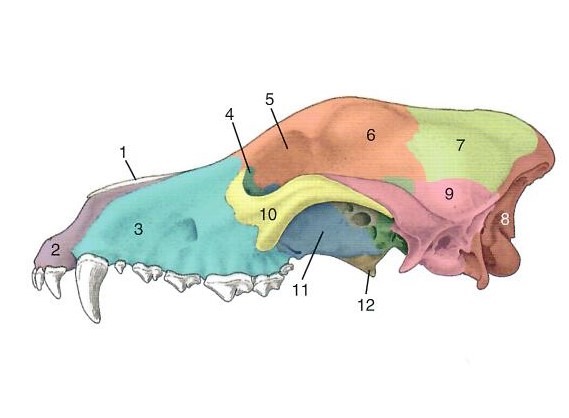
Maxillary Bone
#3
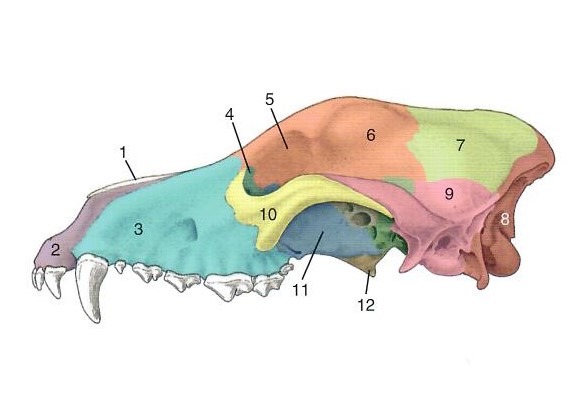
Incisive Bone
#2
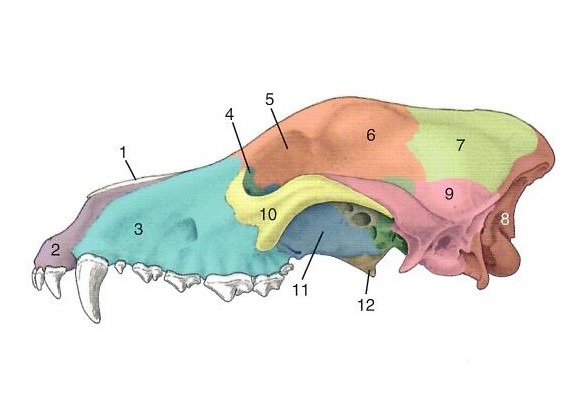
Parietal Bone
#7
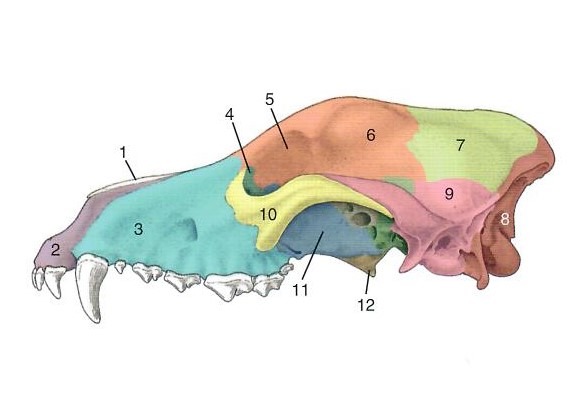
Palatine Bone
Zygomatic Bone
#10
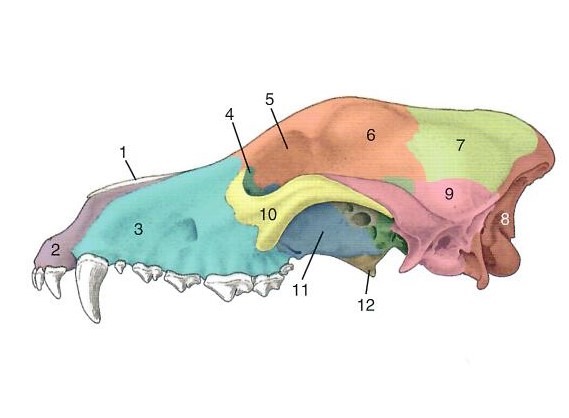
Temporal Bone
#9

Occipital Bone
#8
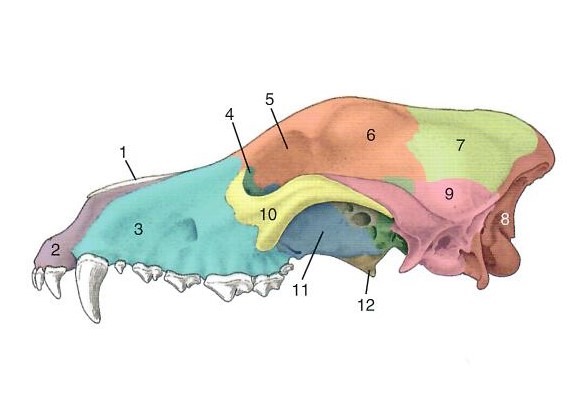
Incisors
Canines
Premolars
Molars
Atlas
Axis
C3- C7
Sternebrae
Manubrium
Xiphoid
Xiphoid Cartilage
Clavicle
Epiphysis
Diaphysis
Metaphysis
Fossa
Condyle
Tuberosity
Spine
Sinus